Posted by Powee Celdran
DISCLAIMER: Although this is almost entirely a work of fiction, it is based on true events and characters. This story alters events that transpired in the 4th century using real historical figures but having a totally different story altogether.
READ BYZANTINE ALTERNATE HISTORY CHAPTER I FIRST BEFORE READING THIS!

Welcome to our first article for this year 2022! Since I have completed a 12-chapter series last year featuring 12 different alternate history scenarios in Byzantine history with one chapter set in each of its 12 centuries (4th-15th centuries), for this year I have suddenly decided to further expand on some of these chapters by creating smaller spin-off stories to them. Although I’ve done 12 entire chapters which cover the entire history of the Byzantine Empire with each having their own twist, this time I will only do 4 spin-off stories for 4 chapters of the series, which are namely chapters I, II, III, and XII (the finale). These spin-off stories now will be almost entirely fictional ones, as they will be based on the alternate history outcomes of these said chapters wherein their endings are not what actually happened in reality, thus there will be no longer a need to explain the historical context of their stories, which I did in the main chapters themselves. Instead, in these spin-off stories, we will just discuss what did happen following these fictional outcomes that happened in these said chapters, as it would already be implied that you already know how these said chapters ended wherein history had been altered, but if not then it is best you read the respective chapters of these spin-offs first, in this case being chapter I. These spin-off stories too by further expanding on the alternate history stories will thus be the stories that will discuss further the chain reaction of events if this said event from the alternate history stories happened and how history will be totally different as the years progress.

Follow me, the Byzantium Blogger on Social Media:
Instagram: @byzantine_time_traveller
Facebook: Byzantine Time Traveller
Youtube: No Budget Films
Deviantart: Byzantium-blogger55
Art Station: Powee Celdran Porphyrogennetos
Patreon: Byzantine Time Traveller
Note: Since this story is set in the 4th century before the fall of the Western Roman Empire, the Byzantine characters will be referred to as Romans, not Byzantines.

Now as this particular one here will be the spin-off of Chapter I of Byzantine Alternate History taking place in the 4th century with its main story on the Roman-Gothic War (376-382) which centered on a fictional Roman victory over the Goths at the Battle of Adrianople in 378 whereas in real history the Romans suffered a crushing defeat to the Goths here, and only a few years later was this Gothic threat taken care of when the invading Goths were settled into the Roman Empire as allied soldiers or Foederati. For this spin-off, we will start off where chapter I ended having a Roman victory over the Goths at Adrianople, and here we will discuss what would happen next following this, and although again things will be almost entirely fictional, there will still be a bit of real history mentioned just to explain a bit on what happened in real history for context. As we discuss further what would happen over the next couple of years following 378 if the Romans defeated the Goths at Adrianople, we will see how things would turn out for both the Romans and Goths in the aftermath of this fatal battle. In this story, we will basically start off with the Romans victorious and what they would do in the next couple of years to strengthen their empire in case another Gothic invasion comes while we will also see how the Goths would react to their defeat, thus most of the same characters from chapter I who survived the events of it will all be here with the addition of new characters as well most being real historical figures whose stories will be altered to fit in this alternate retelling of events in the late 4th century with only a few being entirely fictional ones made up only for this story, thus for the real characters their stories will totally be different from what it was in real history due to the events of history turning out to be totally different. To further make this story complex as one not only about battles with lots of blood and gore, it will be highly fictionalized with a lot of family drama in the Roman imperial family ruling both eastern and western halves, religious tensions in the Roman Empire where the people and the co-emperors are torn between Nicene and Arian Christianity, a lot of betrayals and shifting loyalties, schemes, revenge plots, explorations to unknown lands in Eastern Europe hardly mentioned in Ancient records and the people living in them, and even scenarios that would seem highly impossible if they happened in real history. In its climax, this story will feature a scenario wherein the defeated Goths back across the Roman Empire’s northern border come back with a vengeance now having expanded their territory and uniting with and subjugating more people including the Huns that have been threatening them for the longest time in order to launch a massive invasion on the Roman Empire like never before. Here, we shall see if the Romans would put aside their political and religious differences to face the return and revenge of the Goths and also if the Goths are actually willing to unite to build an empire and strike back at Rome. Now before we move on to the main story itself, first of all the story will begin with a recap of what happened in chapter I of Byzantine Alternate History as well as what actually happened in real history, then we proceed to the main story itself on what will happen after the Romans won over the Goths in 378. Now this story too features a large collection of artworks featuring scenes and characters from the late Roman era from artists whose works I’ve already featured in past articles and new artists in which this article will be the first time I will be featuring their works and these include Giuseppe Rava, Amelianvs, Ediacar, CannicusPalentine, Thehoundofulster, R-ninja, Youngcavalier, LordMatini, Giulia Valentini, and Amdanielito.
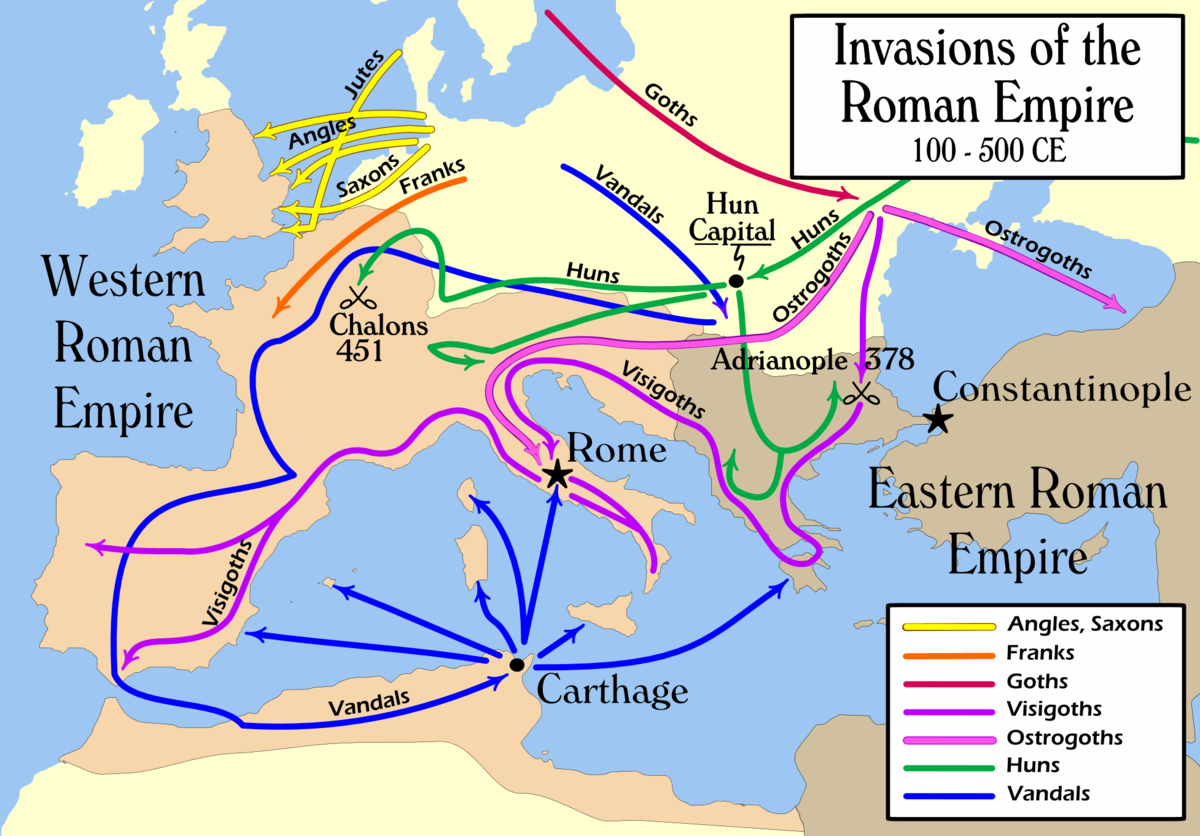

The Leading Characters (Recurring Characters from Chapter I):
Valens- Eastern Roman emperor
Gratian- Western Roman emperor, nephew of Valens
Theodosius the Younger- Eastern Roman traitor general turned Goth general
Fritigern- King of the Thervingi Goths
Athanaric- Co-ruler of the Thervingi Goths with Fritigern
Alatheus- Former Goth commander turned Roman allied commander
*Valdis- Female Greuthungi Goth leader (fictional character made up for this story)
Flavius Stilicho- Western Roman officer
Valentinian II- Western Roman co-emperor, half-brother of Gratian
Richomeres- Western Roman general
Lupicinus- Eastern Roman general
Justina- Western Roman empress, mother of Valentinian II
Arbogast- Western Roman officer
Flavius Anthemius- Eastern Roman officer
Bauto- Western Roman general
Theodosius the Elder- Retired Western Roman general, father of Theodosius the Younger
New Leading Characters Introduced for this Story:
Magnus Maximus- Roman general in Britain
Alaric- Thervingi Goth commander
Ambrose- Bishop of Milan
Vithericus- Young ruler of the Greuthungi Goths, nephew of Valdis
Timasius- Eastern Roman general
Rufinus- Eastern Roman general
Recap of Chapter I and the Events in Real History

In Chapter I of Byzantine Alternate History, we went over a what if of the Western Roman emperor Valentinian I the Great (r. 364-375) surviving his death in 375 as in real history we know that in 375, he suffered a stroke after being so enraged following a failed negotiation with Germanic envoys which thus led to his death on the spot, however in chapter I Valentinian instead survived as his guards and staff stopped him from further being enraged as they couldn’t afford to let him die for they needed a strong emperor like him considering that they were living in a difficult time in which little did they know would become even more difficult. In the meantime, just like in real history Valentinian I’s younger brother Valens had been ruling the Roman Empire’s eastern half from Constantinople since 364 when Valentinian gave him control of the east while he took control of the west, but in 376 everything would change especially for Valens’ eastern half when a massive horde of Goths numbering up to 90,000 including women and children amassed outside the Danube border seeking refuge in Roman territory in fear of a new and mysterious expanding enemy from the north and east, which were the Huns. Valens believing these Gothic migrants from the Thervingi tribe (later Visigoths) coming from across their borders in what was once the Roman province of Dacia (today’s Romania) could be settled into the empire peacefully as they had no choice as their homeland would soon be destroyed by these said Huns.

Although the Goths were let into the empire’s borders, the moment they came in they meant trouble as the Romans did not have enough food supply to feed them that these Goths had to sell off their children to buy dog meat, and when Roman authorities in the Balkans thought of dispersing these Goths before they would mean trouble, the Goths led by their ruler Fritigern rebelled, and when the Roman general in Moesia tried to lure Fritigern and his men in order to kill him off once and for all, Fritigern escaped and out of revenge brutally crushed the Roman army sent to stop him, while the victorious Goths too stole the better quality weapons of the slain Roman soldiers which then made the Goths much stronger in battle. In the meantime, another Gothic horde being warriors from the Greuthungi tribe (later Ostrogoths) which were the Thervingi’s eastern neighbor from what is today’s Ukraine also fled into the Roman Empire’s Danube border as their lands too had been devastated by the Huns, and when arriving they easily slaughtered the Roman border guards allowing them to storm into the empire and devastate it eventually joining with the Thervingi Goths pillaging their way through Roman Thrace in an act of revenge against the Romans for mistreating them.

Hearing of the Goths devastating the Roman Balkans, Valens who was all the way in Antioch had no choice but to declare war on the Goths to push them out of the empire’s borders, thus he sent his troops back to the Balkans while an army from the western half also arrived to contain the Goths. The forces of the Eastern and Western Romans then clashed with the Greuthungi and Thervingi Goths in battle in 377 at the mouth of the Danube into the Black Sea, but at the end, both sides never achieved anything, thus resulting in the battle being abandoned allowing the Goths to again continue pillaging through the Balkans. As the Goths continued pillaging- in the case of chapter I only but not in real history- the Roman general in Moesia being Theodosius the Younger attempted to stop the Goths but in the story’s case was captured and when captured, he was successfully convinced by Fritigern to join them as Fritigern believed that to beat the Romans, they needed a Roman traitor with them to share with them all of the Romans’ battle tactics. Theodosius would however only be fully convinced to join the Goths after helping the Goth leaders break into a Roman fort in Thrace and steal Roman siege weapons while Theodosius too convinced the entire fort’s garrison to join him and the Goths. Valens meanwhile returned to the eastern half’s capital Constantinople in 378 only to immediately be forced to lead the army himself against the troublesome Goths that were already nearby as Valens felt that he needed to win a victory for the glory as he seemed to be losing his popularity, and before confronting the Goths in battle, in the case of chapter I, the still alive Valentinian I- who in real history had already been dead since 375- arrived with a large army to join forces with Valens against the Goths seeing his younger brother Valens again after 14 years as the last time they saw each other in person was in 364 when both were made co-emperors.

For several hours, the Eastern and Western Roman troops marched in the heat of summer arriving at the site of battle outside the city of Adrianople greatly exhausted, however when arriving the battle did not immediately begin as Fritigern waited for all his men to assemble thus making him buy time by faking a negotiation, though out of impatience a unit from the Eastern Roman army charged at Fritigern’s camp above the hill only to be ambushed as the entire Gothic army now with allied Alan and Hun mercenaries arrived encircling the Roman troops below. Like in real history, the battle here went in favor of the Goths who came to the point of encircling the Romans on all sides while by stealing Roman weapons including siege engines, the Goths were gaining the upper hand, however what was different in the case of chapter I was that Valentinian was alive to be in the battle and being a much stronger emperor and commander compared to his younger brothers Valens, he was able to inspire his troops to not give up, thus Roman troops continued fighting rather than losing to fear as was the case in real history. What was different in the case of chapter I too was that the Gothic commander Alatheus and his division including Alan cavalry feeling conflicted defected to the side of the Romans killing his own fellow Goths as well, as he could see that if he joined the Romans, he would have a better future, however this case did not happen in real history, but in chapter I’s case Alatheus switching sides was a major factor that turned the tide of war to the side of the Romans leading to many defeated Goths to flee the battle. Now as the Romans and Goths battled below the hill, both Valentinian and Valens in the case of chapter I charged up the hill attacking Fritigern’s camp and even breaking into Fritigern’s tent when in the story’s case, the enraged Valentinian attacked Fritigern himself when seeing Theodosius there now as Fritigern’s loyal servant, and after both Valentinian and Valens together defeated Fritigern in the duel, Valentinian showed his full wrath to the point of frightening Fritigern, though shortly after, Valentinian’s anger still led to his death due to it, as what happened to him in real history in 375. Fritigern then surrendered and together with Theodosius and the defeated Goths decided to retreat back across the Danube while Valens now came out victorious despite winning a pyrrhic victory with 2/3 of the Roman army lost, and as Valens together with the victorious Romans and Alatheus who now joined forces with them returned to Constantinople for Valentinian’s funeral, victory celebrations followed.

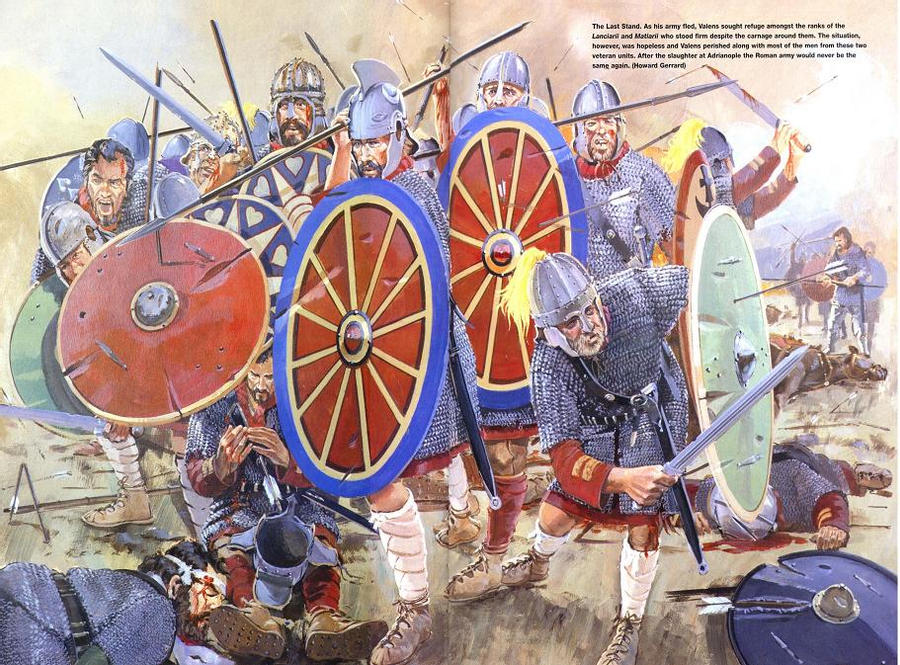
In real history however, the Roman forces lost to the Goths at the Battle of Adrianople in 378 not only because Valentinian I did not live long enough to assist Valens and the east then, but because Valens listened to the bad advice of his generals to attack without waiting for western reinforcements while in battle the Romans being exhausted after marching for hours in the summer heat easily lost to fear the moment the Goths surrounded them.

In real history, Alatheus never defected to the Romans and in fact together with Fritigern after winning the battle continued to pillage through the Roman countryside while Theodosius too never betrayed Rome in real history, as in reality Theodosius was not even present in the Balkans in 378 at the time of the battle, while in real history as well when the Romans lost the Battle of Adrianople, the emperor Valens himself was killed in battle by the Goths when after being wounded sought refuge inside a farmhouse which the Goths fired flaming arrows at without knowing who was in there. With Valens and most of his generals killed in battle, the Goths then freely pillaged their way through Thrace, Macedonia, and even into Northern Greece while another division of them too tried to attack Constantinople later in 378 only to be repelled as they lacked siege weapons, though despite losing the Goths still continued their pillaging spree. In the meantime, since Valentinian I’s death in real history, the empire’s western half was ruled by his son Gratian as its senior emperor or Augustus who only in early 379 managed to contain the Goths by appointing the same Theodosius the Younger who had returned to the Balkans as the eastern emperor considering that after Valens’ death there was no eastern emperor, and out of everyone to be appointed it had to be Theodosius as he was the only skilled general around as shortly after the Roman defeat at Adrianople, he returned to commanding the army in the Balkans.
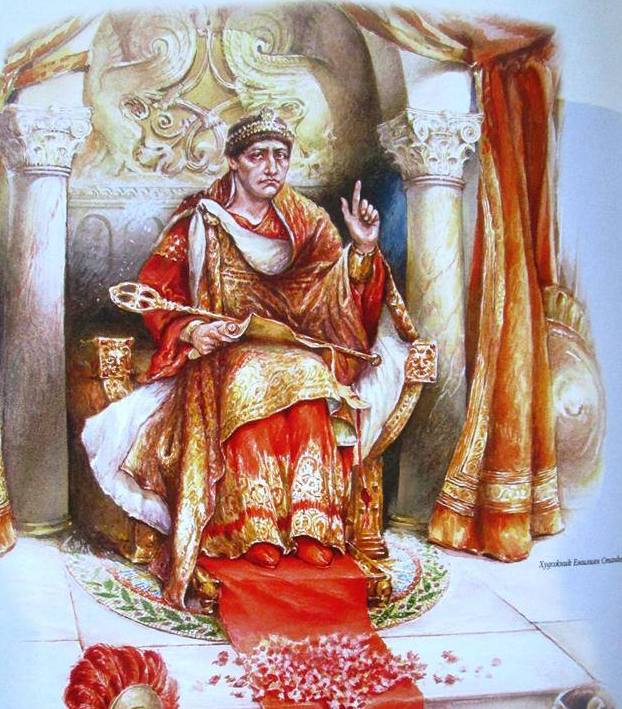
Right when arriving in Constantinople by 380, Theodosius I immediately began the second phase of the Gothic war using the city of Thessaloniki as his base, however his campaigns against the still pillaging Goths of Fritigern began out terribly as lacking an army considering that 2/3 of it was lost in Adrianople, Theodosius had to recruit old veterans that had not fought in decades and inexperienced young men who even cut themselves to avoid being recruited but still ended up recruited anyway while Theodosius too hired Gothic mercenaries which at the end only tuned on them by defecting to their fellow Goths. It was only in 381 however when the Romans began gaining the upper hand against the Goths as here the western armies sent by Gratian managed to push them out of Pannonia (today’s Hungary) back to Thrace, and in 382 with the Gothic army severely reduced, they surrendered to Theodosius ending the Gothic War while Theodosius too decided it was no longer worth it to continue battling them as they would just continue to lose soldiers, thus Theodosius settled peace with the Goths allowing them to live within the Roman Empire as allied Foederati soldiers fighting under their own leaders. In real history, both Fritigern and Alatheus would disappear from the picture after 382 while in 381, Theodosius too granted asylum to Fritigern’s rival Gothic king Athanaric allowing him to live in Constantinople and at Athanaric’s death in 382, he was given the same kind of funeral given to a Roman emperor by Theodosius. Now having Gothic allied troops in the Roman army, they would soon prove to be effective in battle as they helped Theodosius win his future wars.

The Spin-off- The Aftermath of Adrianople (378-384)

In Constantinople, 3 weeks after the Eastern and Western Roman forces won the Battle of Adrianople despite losing 2/3 of their troops sent there, a large triumphal procession took place in Constantinople’s main street the Mese, and here the eastern half’s capital despite being a metropolis for just 48 years since it was founded by Emperor Constantine I the Great (r. 306-337) in 330 was already a thriving imperial metropolis with a large population all cheering as they have finally defeated the troublesome Goths despite losing a lot of men in the process. Leading the triumphal procession was the victorious emperor Valens on a horse in full imperial armor who here did not seem thrilled at all but instead tired as he just came out of a battle that he was sure to lose but still won while he was also saddened as his older brother the Western Augustus Valentinian I died as a result of his own anger after battling the Gothic king Fritigern. The triumphal procession then ended in Constantinople’s Hippodrome, a structure that dates back to the late 2nd century predating Constantinople itself, and with the triumphal procession over, Valens had the body of Valentinian in display for the public to see and when back in Constantinople, Valens was greeted first by his wife the empress Albia Dominica.

Some 2 weeks later was Valentinian I’s actual funeral at the Church of the Holy Apostles, the new mausoleum built to bury the emperors beginning with Constantinople’s founder Constantine I, and here Valentinian I’s son now the senior western Augustus Gratian arrived by ship in Constantinople together with his general and top advisor Theodosius the Elder or simply Count Theodosius- who in real history had already died in 376 being executed by his rivals following Valentinian I’s death- although in this story’s case he is still alive and still in military service, however little did he know that his son Theodosius the Younger betrayed Rome and joined the Goths. Valentinian would then be buried in the Church of the Holy Apostles with both Valens and Gratian present to see his body be laid, and while burying Valentinian, Valens here would tell Gratian that he learned his lesson as when almost losing he realized that he should have always cooperated with the west and also that he should not let his insecurities get the best of him as Valens after all impulsively chose to attack the Goths earlier on without thinking believing he would win a victory as he really needed one considering that he was very unpopular with his people, mostly because he was an Arian Christian while most of the empire’s people were Nicene Christians.
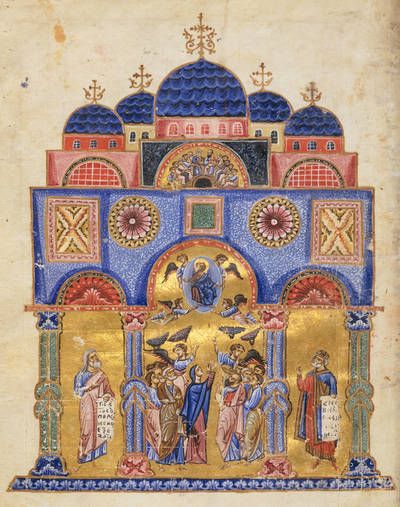
Now with Valens victorious over the Goths’ in this story’s case, he gained a lot of popularity, thus when he and Gratian came to announce their plans, Valens was greatly cheered by the people of Constantinople. Before Gratian and Valens would make their speeches, both would congratulate the heroic Roman commanders both from the empire’s eastern and western halves that survived Adrianople and were now lined up at the Hippodrome’s front row seats and these included the Frankish descended western Magister Militum or “Master of Soldiers” Richomeres and his nephew the junior commander Arbogast, the Western empire’s junior infantry commander Flavius Stilicho who was a half-Roman half-Vandal, the west’s cavalry commander of Frankish descent Bauto, the eastern general of Greek descent Lupicinus, eastern junior commander Flavius Anthemius who was also of Greek descent, the city prefect or Mayor of Constantinople Trajan who however had no part in the battle, and lastly their new Gothic ally Alatheus who now defected to the side of the Romans, and before making their speeches both Valens and Gratian called out their names congratulating them for helping them win a victory while Gratian personally congratulated Alatheus for defecting to Rome seeing Alatheus will be a valuable ally in the future due to his fearlessness in battle as Gratian had heard. Gratian would first begin making his speech saying that he too had won a victory early that year (378) himself by pushing the Alemanni Germanic tribe away from the western half’s Rhine border with the help of his general Theodosius the Elder- though in real history Gratian really won a victory in 378 over the Alemanni except without Theodosius the Elder who had already died in 376- thus this victory would gain Gratian a lot of popularity, while it also shaped him into an adult and a stronger emperor like his father Valentinian I.

Valens however would then butt in speaking up to the people saying that with them almost losing to the Goths at Adrianople it taught them that both east and west should cooperate together at all times but Gratian butts in again speaking up saying that he vows to be the same kind of strong and ruthless emperor his father Valentinian was, but Valens again says that they as Romans must prioritize caution first as this is what his experience in the recent Battle of Adrianople taught him. The people and soldiers in the audience however would end up becoming confused on what both Gratian and Valens were saying until Valens spoke up announcing his succession plan saying that since Gratian was now the senior emperor in the west, Valens would still rule as the most senior of the emperors as he was the oldest but since Valens had no sons as his only son died back in 370 at only 4-years-old, the east following Valens’ death in the future would be inherited by Gratian’s younger half-brother Valentinian II who here was back in Milan and only 7-years-old. When both emperors finished their speeches, both would meet up with Count Theodosius who would then ask what the hell had ever happened to his son Theodosius the Younger, and Valens here would speak the truth saying that Fritigern corrupted his mind making him join the Goths back to their homeland, and when hearing this Count Theodosius was extremely upset and sad, thus he would not show up later for Gratian’s coronation. Although Valentinian I already named his eldest son Gratian his co-Augustus in 367, here Gratian would be crowned again as he was now the senior Augustus of the west following his father’s death, and at Constantinople’s Hippodrome, Gratian dressed in golden robes with a purple cloak over it stood above a large shield lifted by the soldiers whereas people around him shouted “God save the emperor!”. With his coronation over, Gratian would return west by ship together with the western commanders Richomeres, Arbogast, Stilicho, Bauto, and Alatheus who now chose to settle in Western Roman territory while Lupicinus, Trajan, and Anthemius would remain in their original positions in the east with Valens.
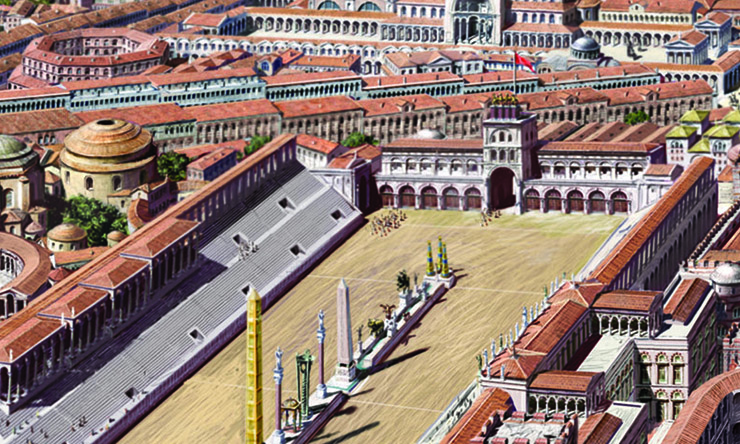
Meanwhile, Fritigern with what survived of his Gothic army as well as Theodosius the Younger after weeks since losing the Battle of Adrianople retreated back north across the Danube to Dacia returning to their old homeland seeing it completely abandoned and desolated considering that thousands of Goths fled into Roman territory while the Huns too have greatly devastated their lands.

Fritigern’s rival King of the Thervingi Goths Athanaric who after being defeated by the Huns years ago lost support causing many of his men to defect to Fritigern instead, now- in this story’s case- retired to an old Roman villa in the Carpathian Mountains located in Dacia (today’s Romania) as Dacia was once true enough a Roman province and a major source of gold export due to its rich mines with its mountains before Roman troops pulled out from it in the 270s. In real history, Athanaric after losing most of his power and influence in 376 too retired to the Carpathian Mountains though here, Athanaric was living comfortably and when seeing Fritigern come at his doorstep, he was in great shock as true enough Fritigern wanted to flee to Roman territory not only because he wanted to escape the Huns but to escape his rival Athanaric, and for Athanaric the best thing that has ever happened to him was Fritigern who had always been a pain on his side leaving. With Fritigern back in Gothic lands and seeing Athanaric again, Athanaric would ask him why he returned and Fritigern would say that he attempted to settle in Roman lands but was mistreated and at the end defeated, though Athanaric would at first not buy Fritigern’s story and still choose to stay away from him. Fritigern however would tell Athanaric that they have no more choice but to stand united as for one they have no chance of standing against the Romans as Fritigern’s Goths failed to migrate to Roman territory and on the other hand, the Huns were still a threat that could wipe them out, thus for the Goths to survive they have to be united. Athanaric on the other hand was at odds with Fritigern and many other Goths for years mostly because of religion as Athanaric was a devout Gothic Pagan while Fritigern and his faction were Arian Christians which made Athanaric believe this spread of Arian Christianity among the Goths would destroy Gothic culture thus leading to Athanaric persecuting his Arian and other Christian subjects which also caused Fritigern to escape the Goth lands.
Meanwhile, Fritigern’s army including Greuthungi Goth allies and Theodosius after leaving Roman territory in this story’s case chose to settle in the ruins of Sarmizegetusa which was once the Roman capital of the province of Dacia which the Goths previously destroyed about a century earlier when the Romans abandoned the province of Dacia, and now the Goths originally being a people without any permanent capital or settlements here chose this place which they here in this case at first built makeshift huts and training grounds to live in.

While basing themselves in the old Dacian capital, the Goth leaders of both the Greuthungi and Thervingi that survived the Battle of Adrianople would bicker negatively amongst themselves especially about losing the battle and a lot of their men, and the one most bitter about their defeat would be Valdis– the fictional female Greuthungi Goth commander made specifically for chapter I- who when setting up camp in this said location would constantly slash her sword on a wooden mannequin remembering how she was defeated in a duel at the Battle of Adrianople to the Roman general Richomeres and thinking about it would further fuel her rage. The other Gothic leaders of both tribes as well had been nonstop complaining and voicing out their rage about how half of their army including their best warriors were slain, about how Alatheus who was one of their toughest leaders betrayed them and joined forces with the Romans which surely was a major factor for the Goths’ defeat, and about how Alatheus’ partner in battle Saphrax was beaten and slain by younger inexperienced Roman soldiers being Stilicho and Arbogast- however in real history Saphrax survived the battle and continued with Alatheus and Fritigern in pillaging the Roman Balkans. Meanwhile, Theodosius who had been resting in one of the Goths’ makeshift tents in the ruins of Sarmizegetusa came out but was not warmly received by the Goth leaders who still saw him as an outsider for being a Roman despite Theodosius contributing a lot in helping the Goths such as in helping them steal Roman siege weapons from a fort in Thrace.

As Theodosius still dressed in his Roman general’s uniform of a scaled cuirass armor with his Roman tunic and trousers underneath walks past the Goths acting as if he were their leader simply because Fritigern was away, they soon begin jumping on him and attacking him to prove his strength in battle, but here the much smaller and thinner Theodosius who was several inches smaller than the average large sized Goths in height surprisingly takes down 10 Gothic warriors with his bare hands knocking them out into the ground including Valdis who however when down on the ground kicks Theodosius in the stomach. Theodosius after defeating the Goth warriors expresses his intention to leave them and return to Roman territory and apologize to the emperor Valens for betraying them as he now started coming to think he was wrong in joining the Goths as he only wanted to do it to gain glory in battle but at the end did not, however Valdis when getting up convinces Theodosius to stay. Valdis herself now had a duty to fulfil which was to be the regent of her nephew the Greuthungi tribe’s very young king Vithericus who here was only 4- in this story’s case- as originally both Alatheus and Saphrax were his regents but with both gone as Alatheus defected to Rome and Saphrax was slain in battle by the Romans, it was in this story’s case only Valdis being the sister of the boy’s late father Vithimiris, the former King of the Greuthungi that died battling the Huns in 376 only left to be the boy’s regent which she could not do alone, thus she needed someone to join her in that duty, and that someone here was no other than Theodosius who had a lot of military experience himself while Fritigern could not fill in the role due to him ruling another tribe entirely. Theodosius then reluctantly agreed to stay with the Goths as long as the boy Vithericus who was somewhere else at this point came to them at Sarmizegetusa in which Valdis agrees to sending a letter to the boy’s mother to come over there. In the following day, Fritigern himself returns to Sarmizegetusa except alone as Athanaric refused his offer to join forces with him and when entering the ruined city’s old and half-broken short Roman stone wall, a number of Goth warriors rush to him asking why he allowed the Roman Theodosius to live with them as they still had not trusted him yet. Fritigern then calls all the Goths in the settlement to assemble at what was once this settlement’s old Roman forum wherein he announces to everyone that Theodosius who is standing next to him is not an enemy or a Roman spy but is simply there because in order to defeat the Romans and other enemies like the Huns, the Goths need to know the Romans’ superior fighting styles. Theodosius at first tells Fritigern what he really thinks that now serving the Goths he does not want to feel being used as a pawn, however Fritigern tells Theodosius that he does not really see him as a pawn but as a king as Theodosius could provide a lot of valuable information to the Goths in defeating the Romans while Fritigern too could see that Theodosius had a lot of potential as a tough and ruthless soldier with all the determination he had. Theodosius then speaks up and walks observing the Goth warriors of both the Greuthungi and Thervingi tribes being able to speak well to them in Latin as true enough many of the Goths understood the Roman Empire’s languages of Latin and Greek and here Theodosius tells them that their traditional way of fighting by just simply showing aggression, using heavy attacks, jumping on enemies, as well as using wagon forts or laagers as their only form of defense is worthless, and that they must learn the more organized battle tactics of the Romans rather than just charging straight into battle in order for they as Goths to finally defeat the Romans in battle. Other than that, Theodosius tells the Goths that he will give them the secrets to making the more superior Roman weapons of longswords and spears telling them too that by having the same strength as the Roman army, they could face their ultimate terror, the Huns.
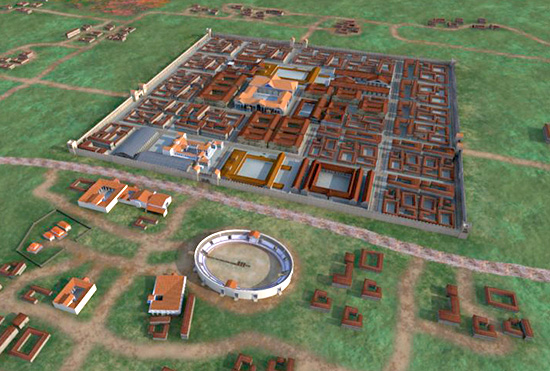
2 years have now passed, and now in the year 380 back in the Roman Empire, the senior Western Augustus Gratian is now fully grown up at age 21, and now learning that the number one lesson to ruling the empire was to cooperate with the eastern half, here he maintains endlessly good relations with the eastern half ruled by his uncle Valens, and here in this story with Gratian’s general Count Theodosius now old and saddened about his son defecting to the Goths, he retires to his personal estate in his homeland Hispania whereas one of the previous Gothic war’s hero Richomeres replaces Count Theodosius as Gratian’s top general or Magister Militum.

By this point, Gratian like in real history following his father Valentinian I’s death had based himself in the city of Augusta Treverorum (Trier) along the Rhine border and in 380 as well like in real history, the Rhine border near Trier would be attacked by the Germanic Alemanni and Vandal tribes who were pushed west by the Goths and Huns into Roman borders, however like in real history Gratian and his forces would easily defeat these invading Alemanni and Vandals. Though winning a victory here, Gratian would later in 381 get word that the same tribes being pressured by both Goths and Huns had turned south and invaded the western half’s Danube border, thus forcing Gratian to decide to move his seat of power from Trier to Mediolanum (Milan) where his younger half-brother and co-emperor Valentinian II was at all this time. Although in this story, Gratian in 381 with the assistance of eastern troops sent by his uncle Valens in this story’s case led by the once cowardly and now brave Greek Lupicinus as well as with the help of their new Gothic ally Alatheus and his men, they would manage to successfully repel this Alemanni and Vandal invasion of the Danube in Germany and when capturing the Vandal and Alemanni leaders they would reveal to the Romans that the Goths and Huns were pushing them into the empire saying that the Goths- in this story’s case- were now coming back with a vengeance but slowly.
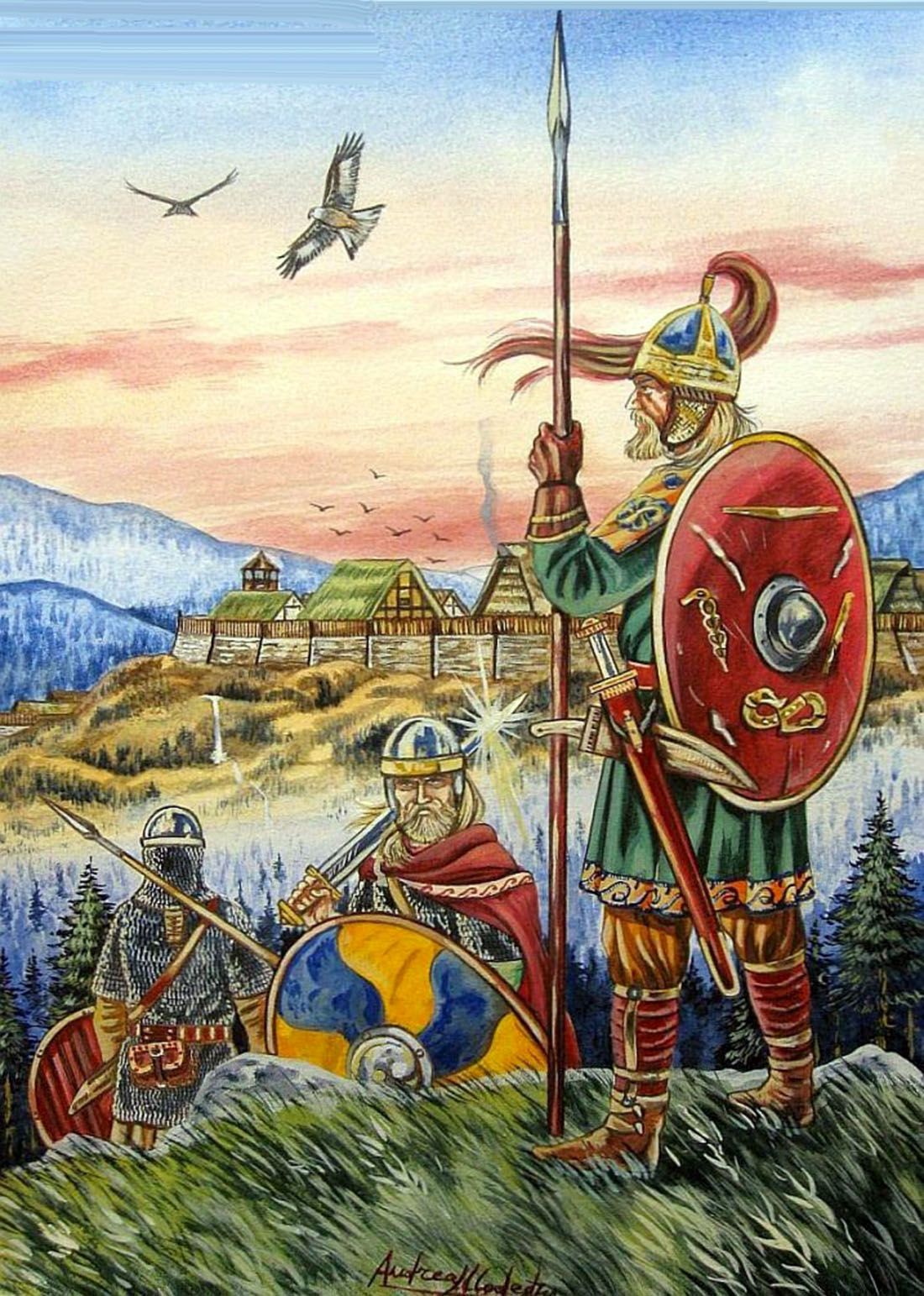
In Milan, Gratian would then meet with his uncle Valens who had in this story’s case travelled there all the way from Constantinople to discuss about what Gratian had heard from his prisoners of war about the Gothic threat returning; Valens here while dining with Gratian would not believe it as his part of the Danube border remained stable for the past 3 years since 378. Later on, Gratian would have a dinner in Milan together with his uncle Valens, his younger co-emperor and half-brother Valentinian II and his mother Justina, the western generals Richomeres and Bauto, and the Bishop of Milan Ambrose who was once a government official of the city before being made a bishop in 374 in order to fill in a power vacuum as the city’s former bishop back then had died. Now Ambrose was born to a Roman patrician family from Trier and had grown up to be a highly educated and cultured man, although when unexpectedly becoming the Bishop of Milan in 374 after just settling a dispute between Church leaders there after the death of the previous bishop which in turn made these people choose Ambrose to succeed the late bishop despite having no religious experience, he suddenly became a Nicene Christian extremist.

In real history, Gratian would be heavily influenced by Ambrose’s extremist ways causing him to severely crack down on Paganism and Arian Christianity in the empire, though in real history the major difference was that Theodosius since 379 had ruled the east from Constantinople and he too was heavily influenced by Ambrose which therefore made him together with his co-emperors Gratian and Valentinian II make Nicene Christianity the empire’s official religion in 380. In this story’s case with Theodosius not around as the emperor in the east but instead the Arian Valens, Ambrose here would successfully begin turning the Nicene Gratian against his Arian uncle Valens thus ruining the good relations between both halves of the empire, and in this story it would already be evident here in this dinner whereas Valens would keep suggesting to maintain peace with the defeated Goths despite knowing about them coming back again as a threat as both Valens and most of the Goths were Arian, but here Gratian acting under Ambrose’s influence would strongly object to his uncle telling him there is no other way but to deal with these Goths with such aggression, but really Ambrose was convincing Gratian to object to his uncle as a way to make Gratian believe that Valens being an Arian sympathized with the Goths. The arguments between Gratian and Valens would soon later on lead to both of them almost getting into a fistfight before Justina, Gratian’s stepmother would stop them, thus Gratian would apologize to his uncle Valens telling him that he is clearly not used to the burdens of being an emperor as after all Gratian was never ready as back in 367 when he was only around 8 his father Valentinian I who here was gravely ill and close to death named Gratian who was his only son then as his co-Augustus as a safety measure, however Valentinian soon enough recovered, and it was also at around this time when Count Theodosius and his son Theodosius the Younger defeated the Great Conspiracy led by barbarian tribes in Britain putting all of Britain back again under Roman control.

Justina here acting as the voice of reason between Gratian and Valens would also tell both of them that she too never thought she would be an empress one day but fate made her into one as back when she was a young girl at only 10-years-old in 350 she was forced to marry the much older usurper emperor Magnentius as a way to secure his legitimacy as Justina was related to the ruling Constantinian Dynasty back then while Magnentius being a general only rose up the ranks and became emperor only after murdering the legitimate emperor Constans (r. 337-350), the son of Constantine the Great, however in 353 Magnentius lost the throne after being defeated in battle by the forces of Constans’ older brother the eastern emperor Constantius II (r. 337-361) leading to the defeated Magnentius to commit suicide. Justina then disappeared from public life since then until sometime in the 360s when meeting Gratian’s mother Marina Severa who back then was still alive as the ruling Western emperor Valentinian I’s wife and later on Justina discovered that Marina was attracted to her especially towards her body and its perfect shape as Marina would frequently bathe together with Justina in Milan seeing the full physique of her body, and true enough the historian of this time Socrates of Constantinople (380-439) says exactly that Marina fell in love with Justina’s beautiful body which possessed such symmetry and form that Marina ended up convincing her husband Valentinian to make polygamy legal only for him to marry Justina while already married to Marina just so that Marina could stay close to Justina. Following this, polygamy was never legal again in the Roman Empire while Marina had already died sometime before 375 when Valentinian I actually died in real history, while Justina after marrying Valentinian in 370 had 4 children with him with only one son being Valentinian II born in 371 and following him 3 daughters namely Galla, Grata, and Justa all born before 375 too. By this point in 381 in this story’s case, Justina now over 40 still had the same attractive physique and beauty, although one secret she had but kept all this time was that like Valens, she was also an Arian Christian, but since her former husband Valentinian was a Nicene Christian but not a devoted one, she still kept her support for Arianism low-key, but now with Valentinian dead she strongly supported Milan’s Arian faction causing a rift between her and the bishop Ambrose like in real history as well.

Now following this meet-up between Gratian and Valens in Milan that went nowhere, Valens shortly after returned to Constantinople while Gratian now ruling from Milan continued ruling beginning to act as the same kind of strong emperor his father was but over time kept falling for the advice and manipulation of the bishop Ambrose who further made Gratian more and more of an extremist Nicene Christian that in 382 like in real history, Gratian being convinced by Ambrose ordered the statue of the winged Roman goddess of victory removed from the Roman Forum in Rome despite it having been there for centuries while also declaring that all the wealth from Pagan temples be confiscated to fund the state administration which then made Gratian more and more unpopular among the Pagans of the empire in which there was still a significant population of. On the other hand, Gratian in this story like in real history as well had been married since 374 to Flavia Maxima Constantia, the daughter of the former emperor Constantius II who was a posthumous daughter being born after her father’s sudden death in 361, although in this story like in real history Constantia did not produce any children with Gratian, and like in real history as well she here also died in 383 leaving Gratian to now marry another woman named Laeta. In this story as it also happened in real history, Gratian in the summer of 383 would be fighting a war again against the Alemanni at the Roman Danube border in Raetia (today’s Southern Germany) and like in real history as well, Gratian here would begin showing favoritism towards his Alan allied army preferring them over his real Roman troops which began making his professional Roman army start feeling more alienated by him, although here in this story Gratian would start relying more heavily not only on Alans but on Alatheus and his allied army of Goths and Alans as here in this campaign in this story’s case, Alatheus and his men had joined Gratian in this campaign wherein these allied Foederati soldiers showed more participation in battle than the professional Roman legions. Due to Alatheus proving his skill in battle more and his loyalty to Gratian as well, he would start becoming Gratian’s chance of scoring victories as here they were successful at repelling the Alemanni, though the professional legion soldiers were again more and more angered by this. In 383 as well just like in real history, the same Roman-Spanish general based in Britain Magnus Maximus after winning a victory against the invading Picts from the north (Scotland) in 382 raised the standard of revolt with his army against Gratian for rather unclear reasons. Now in real history, Magnus Maximus revolted against Gratian mainly because he wanted to rule the empire together with his old friend Theodosius I who in real history since 379 ruled the east making his long-time friend and fellow Roman-Spaniard who previously joined Theodosius and his father in the campaign against rebels and barbarians in Britain back in 367 want to rule the west while Theodosius ruled the east. In this story with Theodosius no longer in the Roman Empire, Magnus in Britain would still rebel as he saw that Britain needed more military protection and attention from the emperor as Gratian neglected Britain seeing it as too far away, thus in 383 as well Magnus together with his army crossed the channel into Gaul now declaring war on Gratian.


Meanwhile, as of 382 the Goths back in Dacia have now continued to regroup and thrive with both Thervingi and Greuthungi tribes living together under the rule of Fritigern while Theodosius after 4 years of living with the Goths had now grown accustomed to the Goth way of life, thus he began dressing up in the more unkempt clothes of the Goths that included fur and animal skins as well as styling himself like a Goth with long hair and a beard, while years of having to survive in the much colder climate across the Danube wherein Theodosius had to chop wood and carry heavy items himself made him gain more muscle though made him more and more ruthless as well. Since 378 as well, the young ruler Vithericus who became the Greuthungi’s ruler at only 2-years-old- at least in this story’s case- back in 376 had arrived in Sarmizegetusa with his unnamed mother and protector, and now in 382 he had already matured now being 8, and although Vithericus never really remembered his original regents Alatheus and Saphrax much since he was only 2 when he last saw them, all he knew when growing up was that the Romans killed Saphrax while Alatheus defected to them which then made Vithericus keep asking his new regents Theodosius and Valdis to have revenge on Alatheus for leaving them.

Theodosius however still keeping his cautious approach to things which he learned from years of serving in the Roman army would here keep telling young Vithericus that they will only have revenge on Rome when the time is right. In the meantime for the past 4 years, Theodosius had succeeded in teaching the Goth warriors all fighting styles of the Romans though with such difficulty as it seemed to be difficult at first for the Goths to start adapting to the Roman fighting styles, though at the same time Theodosius ordered thousands of late Roman style spears, shields, swords, darts, bows, and arrows manufactured for the Goth warriors, and one thing too that he educated the Goths in was in fighting in the same way as the Roman heavy cavalry or Cataphracts did by using long and heavy spears when riding a horse, though this cavalry unit the Romans used as well as their fighting styles was heavily influenced by the cavalry of the Goths and Rome’s traditional eastern enemy, the Sassanid Empire.
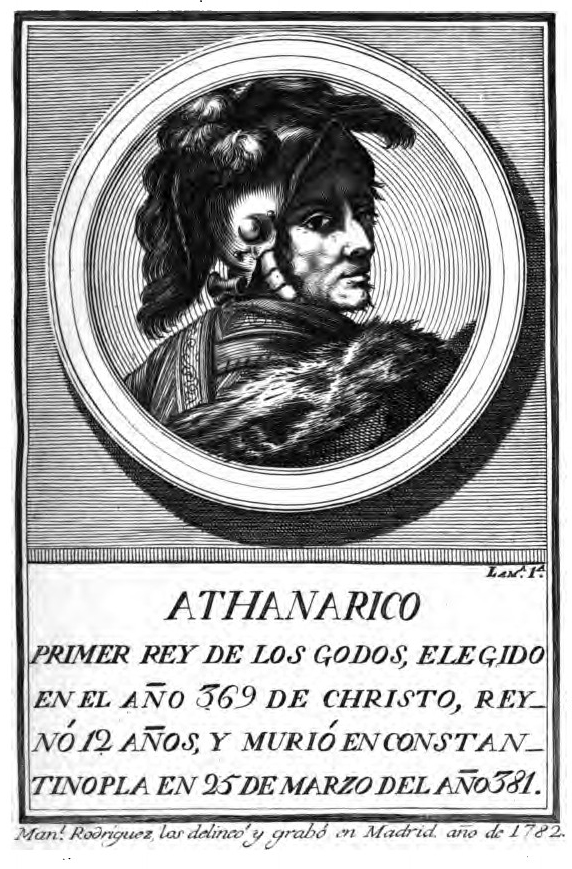
Only 4 years later in 382 since the Goths returned across the Danube however would Athanaric finally change his mind and agree to join forces with Fritigern, thus Athanaric here in 382 would show up in Sarmizegetusa which now transformed from an old ruin the Goths squatted on to becoming a thriving settlement with many standing clay and straw houses wherein he would ask to meet Fritigern himself, and when meeting each other Fritigern would at first think Athanaric was only feeling guilty for turning him down 4 years earlier but when Athanaric would demonstrate his skill with a sword by chopping a wooden table with it despite being here over 50, Fritigern would now let him in but also ask why he suddenly showed up. Athanric here would say his reason to now change his mind and help Fritigern despite being rivals in the past was because he knew that the Huns could one day return to destroy them all while the rest of the Goth lands in Eastern Europe too fell into ruin, thus it was about time to put aside their differences as Athanaric did not have enough men to stop the advance of the Huns from the east and put most of Eastern Europe back under their hands, but only with Fritigern whose men now have begun training in the more advanced Roman battle tactics could they stand against the Huns and build a “Gothic Empire”; ironically not to mention, it was in 382 in real history when Athanaric died in Constantinople, but here in this story he would be alive and well and ready for battle again.
Back in the Roman Empire meanwhile, as Magnus Maximus’ now invaded Gaul in 383, here like in real history many of Gratian’s professional soldiers would defect to Magnus due to Gratian’s favoritism over barbarian allied troops, and here Magnus would track Gratian and his men to Paris just like in real history, although in real history Magnus captured Paris forcing Gratian to flee to Lugdunum (Lyon) where Magnus’ men found Gratian killing him there making Magnus proceed south to Italy attempting to overthrow Gratian’s younger half-brother and co-emperor Valentinian II but before reaching Italy, Magnus’ army was stopped at the Alps by a Roman army led by the same general Bauto.

In this story however, when Gratian still remained in Paris, he here summoned Alatheus and his Goths from the Rhine area once again to strike back against Magnus together with Bauto, Arbogast, and Stilicho with their troops as well and before Magnus had tracked him down, the troops of Stilicho and Arbogast had already cornered and encircled Magnus and his army right in time for Alatheus and his Goths to charge straight at them in a fury. In real history though, Magnus after having been proclaimed emperor by his troops in Britain had also made his teenage son with his local native Briton wife Victor his co-emperor as well against Gratian thus bringing Victor along with him too, though in this story when Magnus and his men were ambushed outside Paris by Gratian’s forces, Victor here would be slain personally by the Goth Alatheus who would suddenly jump on Victor then tear Victor into pieces himself while Magnus terrified at the sight of the fearsome looking Alatheus and his son torn apart to death would at least escape the battle alive, though Magnus would still lose his claim to the throne when escaping. Now in real history again, after the death of Gratian in 383 and Magnus attempting to attack Italy, the Bishop of Milan Ambrose was left to deal with Magnus by negotiating with him which was successful at first. For the next 4 years then in real history from 384 to 388, Magnus would rule over the provinces of Gaul, Hispania, North Africa, and Britain from Trier, though in 387 Magnus broke his word and invaded Italy forcing Valentinian II now the senior Western emperor since Gratian’s death in 383 together with mother Justina and 3 sisters out of Milan to flee east to Theodosius I’s eastern half. After being convinced by Justina in 388, Theodosius personally led the army together with Arbogast and Richomeres west to finally confront his old friend Magnus and his forces as Theodosius at first did not do anything about Magnus since they were friends for years. In real history, Magnus’ forces were then defeated in battle near the city of Aquileia in Northern Italy by Richomeres, although Magnus fled to Aquileia but was found there and executed at the age of 53 while his son Victor on the other hand who was in Trier then was strangled to death shortly afterwards by Arbogast under Theodosius’ orders. In this story however with Gratian surviving and Theodosius not around in Roman territory but instead Valens still ruling the east, the defeated Magnus would flee east to Roman occupied Germania where he would somehow receive word from his old friend Theodosius who now lived with the Goths to come over and join the Goths to further train their armies in the Roman fighting styles.
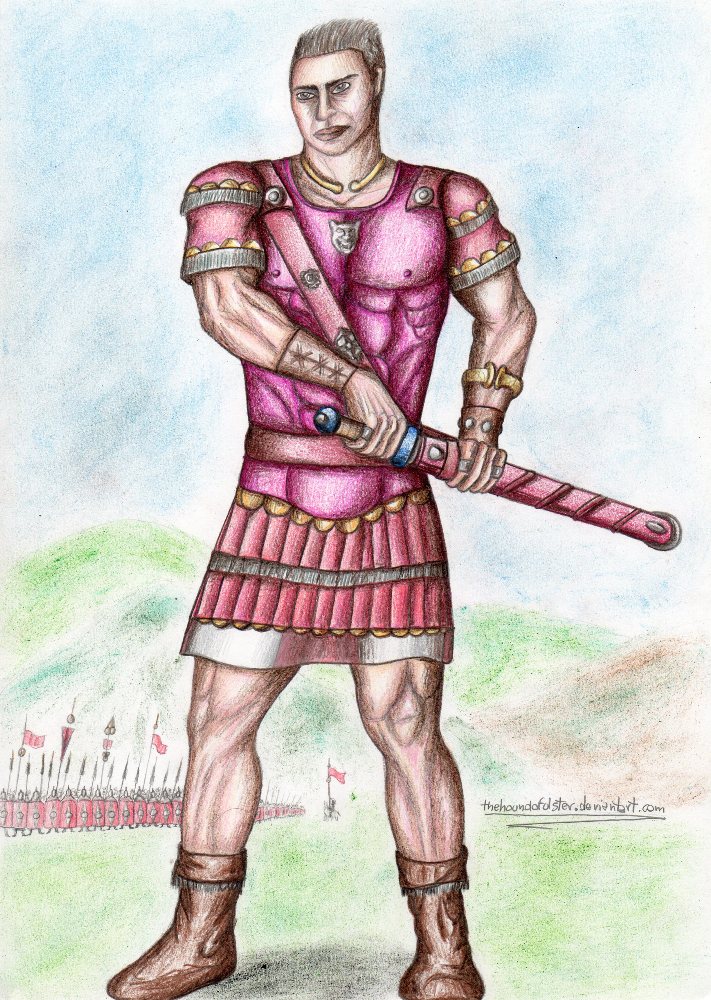
Another person who in real history rose to prominence too beginning 383 was the half-Roman half-Vandal general Flavius Stilicho who although in real history rose under Theodosius I in the east, but in this story with Theodosius not around Stilicho would rise under Gratian in the west, and like in real history in 383 as well, Stilicho would be sent east to the Sassanid capital of Ctesiphon to negotiate peace with the Sassanid emperor (shah) Shapur III. By around 384 in this story’s case, Magnus Maximus after losing his claim to the throne would then arrive reuniting with his old friend Theodosius who was in fact a full 12 years younger than Magnus in the Goth’s base Sarmizegetusa wherein Magnus would tell Theodosius about everything that happened including about how one Goth terrified him by tearing his son into pieces. When hearing Magnus’ story, both Theodosius and Valdis would show a lot of interest especially in asking who this particular Goth was, although Magnus not knowing his name only said this said Goth was very pale in skin, had red hair in the form of a mohawk, and had a beard, and would also say that this Goth seemed to be the Western emperor Gratian’s lethal weapon, and now both Valdis and Theodosius would immediately recognize this Goth as Alatheus, although they did not recognize the beard as back then when they last saw him in 378 Alatheus was still a young man in his 20s without a beard, though Valdis here would agree with Magnus that Alatheus surely needs payback the moment they invade Roman territory. In the next few weeks with Magnus now settling in Sarmizegetusa, both he and Theodosius would continue drilling the Goths more in the Roman ways of fighting and eventually teaching them all about Roman culture and administration as well, as both Theodosius and Magnus then came to realize that to defeat an enemy like the Romans it does not only help to learn their battle tactics but to know their mind and culture as well.

The spin-off continued- The Revenge of the Goths (385-388)

By 385, Stilicho after a successful negotiation with the Sassanid ruler Shapur III retuned to the Roman Empire first to the east passing by Antioch first and later Constantinople to report his success to Valens, thus Valens would send a letter to his nephew Gratian in Milan about Stilicho’s success which then gave Stilicho a promotion in the Roman army, here in this case to the rank of Magister Equitum which was the late Roman rank for cavalry general, however Gratian when hearing this would feel jealous and in a way betrayed as Stilicho served the western half and it was the eastern emperor Valens that would be the one to promote him and not Gratian. Despite feeling jealous that Stilicho was now being favored by Valens, Gratian would receive word of the Danube border in Pannonia being attacked by an army Goths which had managed to break through killing off the Roman Limitanei (border guard army), thus Gratian would immediately deploy an army led by his general Richomeres together with Arbogast as well as no other than Alatheus and his allied Foederati troops that Gratian now highly favored. Valens when hearing of this attack keeping his word to cooperate with the western half at all times then would send Stilicho as well as Anthemius who too rose up the ranks to becoming a senior officer and the general Lupicinus to the area that the Goths attacked.

Meanwhile, a large army of the Goths now equipped with Roman weapons led by Theodosius, Valdis, and Magnus have already departed Sarmizegetusa, and they then had happened to be the ones to attack Roman Pannonia that Gratian had just heard of just to test their skills in using Roman battle tactics against the Romans themselves, and in Sarmizegetusa both Fritigern and Athanaric would then meet at the former Roman governor’s headquarters which both rulers of the Thervingi now turned into their headquarters, and here both old men agreed that they will be co-rulers with equal power over the Goths, while Athanaric too proposed that the Greuthungi should now unite with the Thervingi considering the Greuthungi have no leader except for the young boy Vithericus who lives among them in Sarmizegetusa and is already proving to be a liability to them while the Greuthungi homeland in today’s Ukraine was now fully taken over by the Huns, thus they would have no choice but to submit to the Thervingi. Fritigern thus agreed to Athanaric’s proposal but on the condition that Theodosius would be their junior ruler and so would Valdis as having Valdis in power would still show that the Greuthungi people are still represented as she belongs to them, Athanaric thus agrees but also tells Fritigern he has an addition to their army, a man very strong in battle as a result of being full of anger and hate.
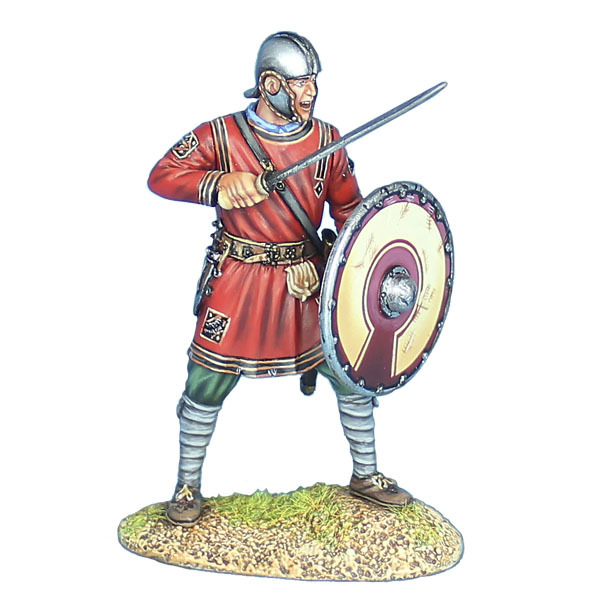
Back in Roman Pannonia not too far away from the Goths’ base, the Gothic army under Theodosius, Valdis, and Magnus have now crossed the Danube, although soon enough they are confronted with thousands of the more elite Roman infantry soldiers or Comitatenses, and although the Goths now using Roman weapons and fighting with Roman tactics push them back, the Goths under Magnus flee to a nearby swamp, though at the swamp Magnus and his Goths are suddenly ambushed by no other than Alatheus again and seeing the same man with the large red mohawk that tore his son into pieces, Magnus would run in fear back to Theodosius, Valdis, and their men. When returning to them, Magnus would notice that they have been surrounded by Roman troops led by Richomeres, Arbogast, Anthemius, and Stilicho mounted on horses, while the 5th commander Lupicinus later rides in asking out of the blue what happened. Theodosius and Valdis here attempt to strike back and kill all the Roman commanders most especially the traitor Alatheus by themselves while Anthemius too remembering Theodosius’ face- as in the case of this alternate history story and prior to the events of chapter I, Anthemius once served under Theodosius years ago- plainly and boldly calls him a traitor to Rome that needs to face execution, however Richomeres prevents a full bloody battle here from happening by asking them to head to a nearby ravine to the east where they will battle it out.

By the time night falls, the Goths with Theodosius, Valdis, and Magnus arrive at this said ravine but rather than seeing these Romans face them off, they are suddenly ambushed from above by boulders, and as Theodosius is first to look up, he sees the Roman Comitatenses soldiers being the ones rolling the boulders down at them while seeing Richomeres, Stilicho, Alatheus, and Lupicinus too laughing as Theodosius and his men easily fell for this trap. Theodosius, Valdis, and Magnus though escape alive despite losing a number of men to the falling boulders, but with such determination Theodosius tells Valdis and Magnus that these Romans will sure soon enough, most especially the Goth traitor Alatheus get the revenge they so need. Days later, as Lupicinus and Anthemius being part of the eastern army return to their bases in the eastern half while Richomeres, Stilicho, Arbogast, and Alatheus return to their bases in the western half, the surviving Goths including Theodosius, Valdis, and Magnus return east to Sarmizegetusa where both Fritigern and Athanaric welcome them by introducing a new member to join their ranks, and this would be Athanaric’s young nephew Alaric. Now in real history we know Alaric being a Goth only joined the Roman forces and came into the picture in the 390s, and though he was from the Balti Dynasty which Athanaric was also part of, it is not known how Alaric and Athanaric were related, but here we would simply say for this story that Alaric is Athanaric’s nephew. Now, Alaric was one young man with extreme anger and hate as he grew up hearing of how his people the Goths were bullied and mistreated by the Romans for so long whereas so many Goths were enslaved by the Romans while so many innocent Goth women and children too were massacred by the Romans for so long, and Alaric could not let this continue happening thus giving him such anger and hatred towards the Romans which he simply stored inside him as he would use it all one day when facing off the Romans in battle. When returning to Sarmizegetusa though, Athanaric would inform Theodosius, Valdis, and Magnus that both he and Fritigern decided that in the meantime they should not attack the Romans as they should first focus on driving the Huns away in the north and further increase the strength of their Gothic army. Valdis however is disappointed hearing that they cannot attack the Roman Empire for the meantime leaving the Romans to backstab them all they want, but her superior Athanaric tells her that they will eventually one day, assured that they would win against the full might of the Romans especially if they the Goths manage to defeat the Huns and incorporate these terrifying Hun horsemen into their army in order to invade the Roman Empire.

Back in the Roman Empire, the western emperor Gratian still based in Milan would continue to more and more fall under the influence of the bishop Ambrose who would further convince Gratian to not trust his uncle Valens and believe Valens is a Goth sympathizer despite having no clear evidence on it except that Valens was an Arian Christian like most Goths. Gratian would then be deeply troubled by this and so in 387 in this story, Gratian together with Ambrose as well as his half-brother Valentinian II, 3 half-sisters, and their mother Justina would journey to Constantinople by ship to pay Valens a visit, though for Gratian he really came there to see if his uncle was really secretly conspiring with the Goths or not.
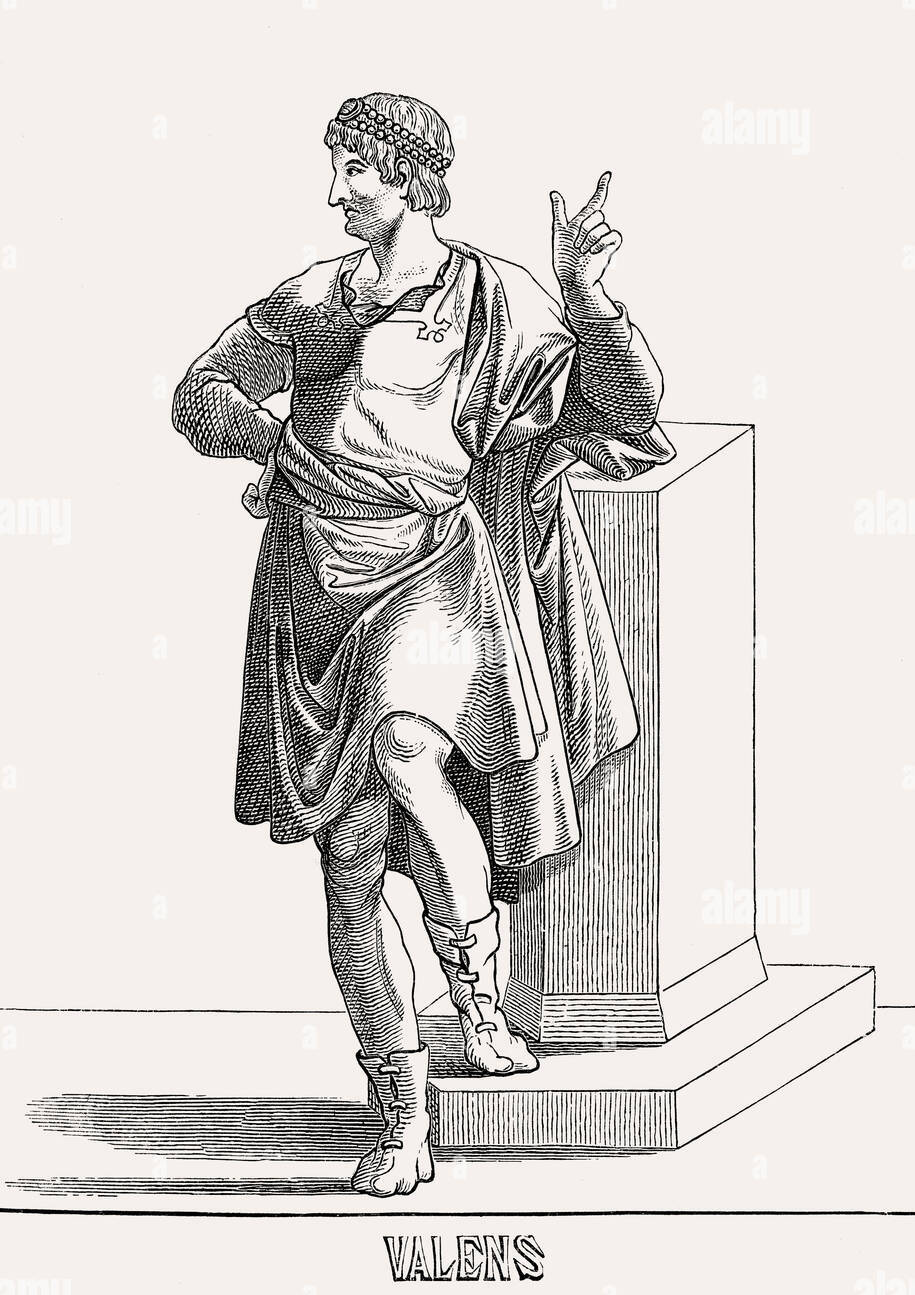
To keep their discussion private from their family members, Gratian and Valens would meet at a private room at a high-end tavern near Constantinople’s Hippodrome and here Gratian would simply ask his uncle if he has in any way been writing or receiving letters from the Goths but Valens says he has not except that he has only heard of both Theodosius and Magnus now training the Goths in Roman battle styles as told to him by spies. Gratian would then ask his uncle about the whole Stilicho incident 2 years earlier wherein it was Valens that promoted Stilicho and not Gratian as Stilicho serving the western half was supposed to receive his promotion by Gratian, however Valens would feel this question was useless and would tell Gratian to simply man up, stop falling for the manipulation of the bishop Ambrose, and lastly stop fixating too much on religion and religious issues as Valens already knew that this is what could cause such disunity in the empire especially in such bad times considering that the Goths would one day return for revenge.
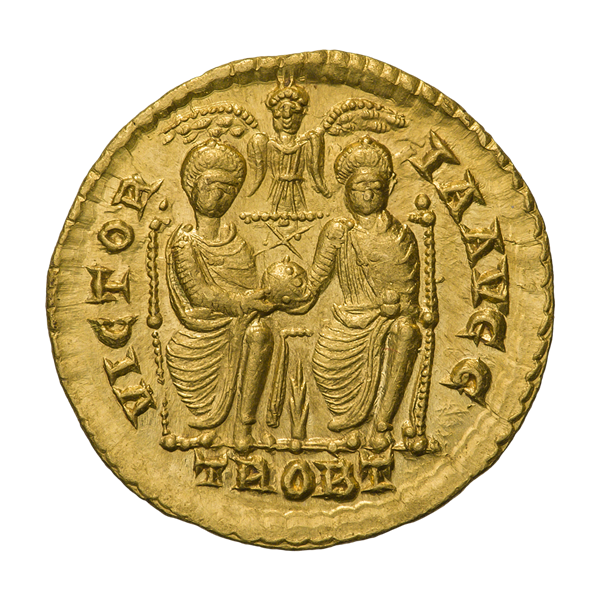
Gratian meanwhile feeling belittled by his uncle would suddenly show the same wrath his father Valentinian I had by simply saying to his uncle “shut the hell up!”, though Valens would in return simply tell Gratian that he has too much of his late father’s anger, but Gratian still having such anger would go as far as reminding Valens that Valens began out as a loser having done nothing until he was already 36 when he was appointed by his older and more accomplished brother Valentinian I as his co-emperor in 364 after the sudden death of the unexpected short-reigned emperor Jovian (r. 363-364) wherein both Valentinian and Valens ordered the blinding of Jovian’s infant son to prevent a succession crisis causing the late emperor’s wife to live in fear for her entire life. Seeing Valens becoming enraged, Gratian would then straight out challenge his uncle Valens to a fight to the death at Constantinople’s Hippodrome in 2 weeks wherein either one of them dies or is severely injured, and the one who wins will decide everything for the empire and choose whether Arian or Nicene Christianity is the official religion so that disunity would not continue to grow as only one religion would be followed, thus if Gratian wins it’s the Nicene faith and if Valens, the Arian faith. For the next 2 weeks, both Gratian and Valens would train in different fighting forms including those used by Roman gladiators in the past, and here Gratian would seem more agile as he was only 28 while Valens already being 59 here would have to further practice his fighting skills.
In the meantime, Alatheus with a few of his allied Goth and Alans would here be stationed at the Roman fort of Singidunum (today’s Belgrade) along the Danube border, and in one early morning here in 387 as well, as Alatheus was sleeping he would hear some noise sounding like the fortress was under attack, thus he woke up and without having any time to put on his armor but instead only grab his sword, he saw the same Goths of Theodosius and Valdis attacking the fort after having crossed the Danube again thus killing off his men considering now that the Goths led by Theodosius and Valdis were now fighting with Roman weapons and shields.
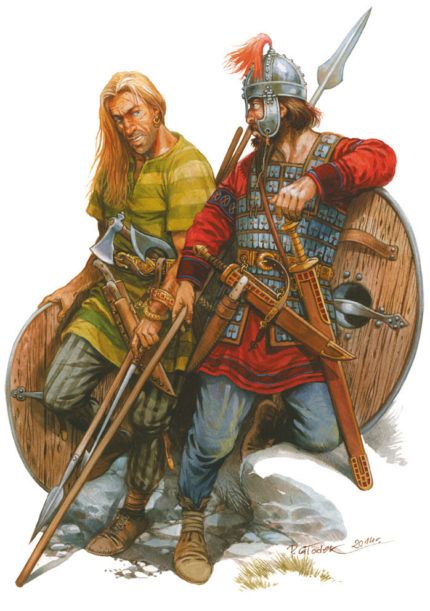
The attacking Goths too set fire to the fortress using flaming arrows leaving Alatheus to question why the Goths suddenly attacked again and out of all locations why his base, making him later believe they were there to get back at him for betraying while spies possibly told them he was there in Singidunum. Before Alatheus could put on his armor, a group of 20 Gothic warriors together with Theodosius, Valdis, and Magnus stormed into the armory as they now took over the fortress thus cornering Alatheus, and although they were told by Fritigern and Athanaric to not attack the Romans for now, they simply broke their word and ignored it as they really did not come here to attack the Roman Empire but to just simply attack Alatheus to get back at him as for so many years when having the chance to do so they never got it, and only here they finally did with Alatheus caught off-guard. Now being cornered and having no time to put on his armor, Alatheus with just his sword fought off these Goths armed with large axes cornering him killing 5 of them but before being able to kill the 6th Goth, Magnus pulled out a metal chain strangling Alatheus with it with such intensity out of anger for Alatheus killing his son Victor earlier on, although Magnus used the chain to drag Alatheus down to the fortress’ dungeon with Theodosius showing them the way to it as in the past he had once been there as part of his military tours in the Balkans being the commander or Dux of Moesia then.

While in the fortress’ dungeon area, Alatheus is brought to the torture chamber there where the Romans in the past used it to torture prisoners of war, and here they chained Alatheus to the torture table as if crucifying him in an x-shape while the metal chain was put around his neck and nailed to the table in order for him to not move his head as the Goths wanting revenge on him wanted to make his death slow, and here Alatheus found out that they not only came for revenge on him but because by destroying him they would further weaken Gratian and his army due to Gratian heavily relying on Alatheus and his strength. As the Goths that were once Alatheus’ fellow soldiers before he defected to Rome 9 years earlier in 378 savagely beat him with clubs, tore off his clothes, and broke most of his teeth, Theodosius said he will give Alatheus what he really deserves, as Theodosius here was informed by Valdis and the other Goths that the young Alatheus similar to Fritigern before becoming a leader of the Goths was once a weak child afraid of everything but only learned to be a tough fighter when deciding to one day fight while Alatheus- in this story’s case only- also shaped his hair into that distinct mohawk he has to boost his confidence and authority, thus to break Alatheus’ confidence and humiliate him, Theodosius knew that to do it, he must cut off his hair and beard which Alatheus recently grew. The now beaten Alatheus without much freedom of movement due to being chained on all sides to the table would now face the worst humiliation of his mohawk being shaved off by Theodosius using a razor blade, while following that Theodosius would shave off his beard as well and later continue to slash his face and body to further disfigure it. With the torturing done, Theodosius then kicked Alatheus in the stomach and spat at him while he as well as Valdis, Magnus, and the other Goths left laughing after releasing Alatheus as he was brutally beaten with his hair all shaved off. Hours later, the humiliated Alatheus got up, put on a new set of clothes and ran out of the fortress in which now was half-burned with all his men that survived captured and enslaved by Theodosius, and ran towards the Danube River which was below the fortress. Looking at his reflection on the river, Alatheus would see for himself how reduced he became with his mohawk that he took such pride in completely cut off, thus when seeing himself he would be in tears, afterwards writing a note about what happened, then following that he would stab himself in the chest with his sword leading to his death as clearly, he thought that mohawk and nothing else gave him a purpose to live.
Now back in Constantinople 2 weeks later, the grand fight between Gratian and Valens had begun with both emperors entering the Hippodrome as if they were fighting a gladiator match to the death whereas the entire family including Justina, Valentinian II and his 3 sisters, Gratian’s wife Laeta, Ambrose, Valens’ wife Albia Dominica and a number of commanders including Lupicinus, Anthemius, Constantinople’s prefect Trajan, and Stilicho as well as hundreds of other civilians in attendance as word got to them that both Valens and Gratian agreed to battle each other to decide which emperor shall fully rule the empire. The fight would then first just be the emperors fighting with their bare hands despite both in full armor, and first the fight would be in favor of Gratian who being faster due to being much younger pinned down his uncle Valens twice kicking him in the face, however Valens would manage to grab Gratian in the leg, pull him down and punch his face. Gratian however would get up, grab the sand below and throw it at his uncle’s eyes causing Valens to spin out of control, and with Valens falling Gratian then kicked him hard, thus the first part of the fight was over with Gratian winning.

The soldiers of the imperial guard force or Palatini would then come in from one of the Hippodrome’s entrances giving Gratian and Valens their respective longswords or Spatha, thus both uncle and nephew would duel each other with swords to the point of either killing or severely wounding each other. Using these swords, Gratian would first manage to slash his uncle’s arm while Valens in return would stab Gratian in the stomach, although Gratian in full metal armor would be barely wounded as the armor simply protected him with it only being dented. Afterwards, both swords would hit each other, but following that, Valens would kick Gratian’s leg causing him to fall but before he fell, Gratian grabbed his uncle by the neck causing them both to fall, and when down Gratian got up pointing his sword at his uncle’s neck saying he won, however the fight would be interrupted when 3 soldiers from the Limitanei legions rushed into the Hippodrome saying they came all the way from the Danubian Limes (Danube border) bringing them something saying the Goths sent them a message.

Gratian would then rush to these soldiers asking them what they brought, and from one horse they dropped down a bag and when Gratian opened it, he saw no other than the dead body of a severely beaten Alatheus with his hair shaved off which would shock Gratian when seeing it, and sensing something was wrong Valens including others like Ambrose, Stilicho, Anthemius, and Justina would rush to see it also seeing the dead Alatheus. Gratian would then read the note that came with the body that Alatheus wrote before killing himself which said that the Goths have now returned to have revenge with Theodosius leading them, and Gratian would then see it as an act of war but as Valens saw the note, he would not agree to returning to war as he could tell that if they fight the Goths now that they trained themselves to fight like Romans as the letter said so, they would have a sure chance of winning. Ambrose here would tell Gratian that they should surely have war on the Goths especially since the Goths may want to spread Arian Christianity when they invade, thus Gratian would simply tell his uncle it’s final that they will now cut ties for good and that if ever the Goths invade, Valens and the eastern half shall be on their own as Gratian would not send any troops from the west to help. Gratian would then leave Valens alone in the Hippodrome as together with Ambrose, Laeta, Justina, Valentinian II and his 3 sisters, and the rest of the western troops they would depart the Hippodrome while the eastern commanders being Lupicinus, Trajan, Anthemius, and surprisingly Stilicho who began to see eye to eye more with Valens would stay behind with their emperor Valens. Though before returning to Italy, Gratian would give Alatheus a proper burial outside Constantinople’s Constantinian Walls- erected by Constantine the Great in 330- and here Gratian would be in great mourning as Alatheus was really his best and toughest soldier and his best chance of winning despite being a Goth, thus Gratian and his entourage would return home all disappointed.

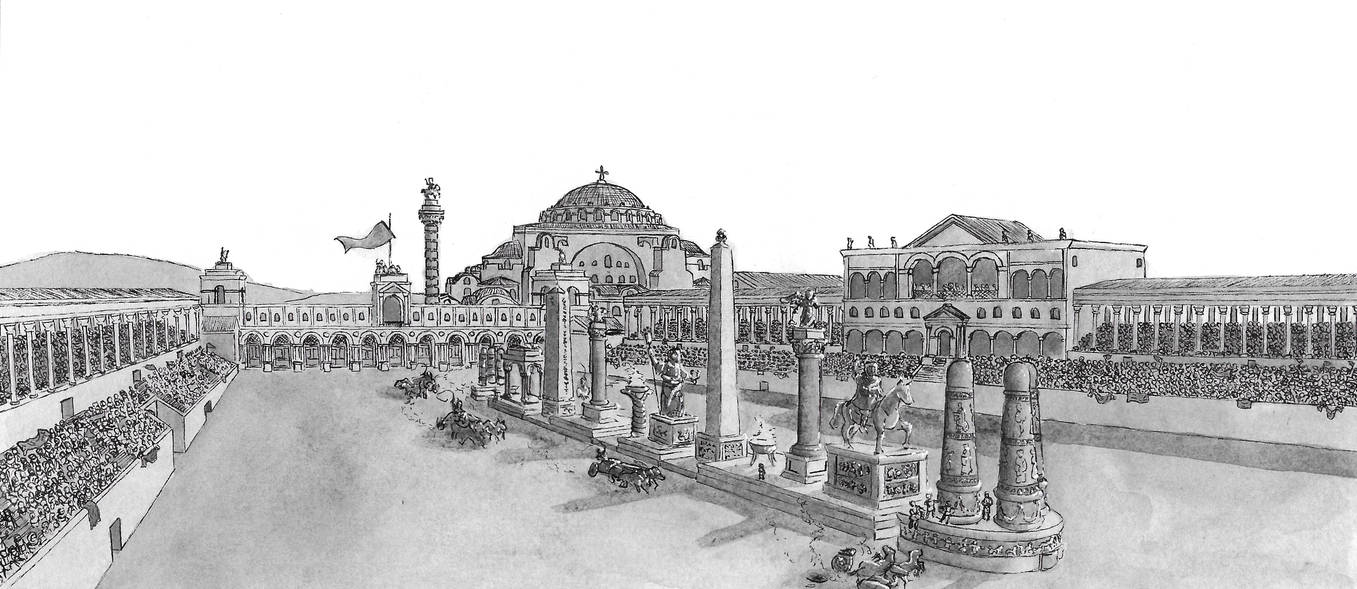
Back in the Goths’ base Sarmizegetusa, Athanaric then received word that Alatheus was fully dealt with while the Romans had now been weakened as Gratian and the western half had now cut ties with Valens’ eastern half, and hearing this Athanaric was more than glad as he saw this now as a perfect opportunity to attack the Romans as they are now divided while the Goths have unified. Fritigern however would remind Athanaric that they must prioritize consolidating their rule over their old homeland in Eastern Europe first before fully invading the Roman Empire again while also suggesting to Athanaric that Theodosius must marry Valdis in order to be part of the Goths’ ruling dynasty.
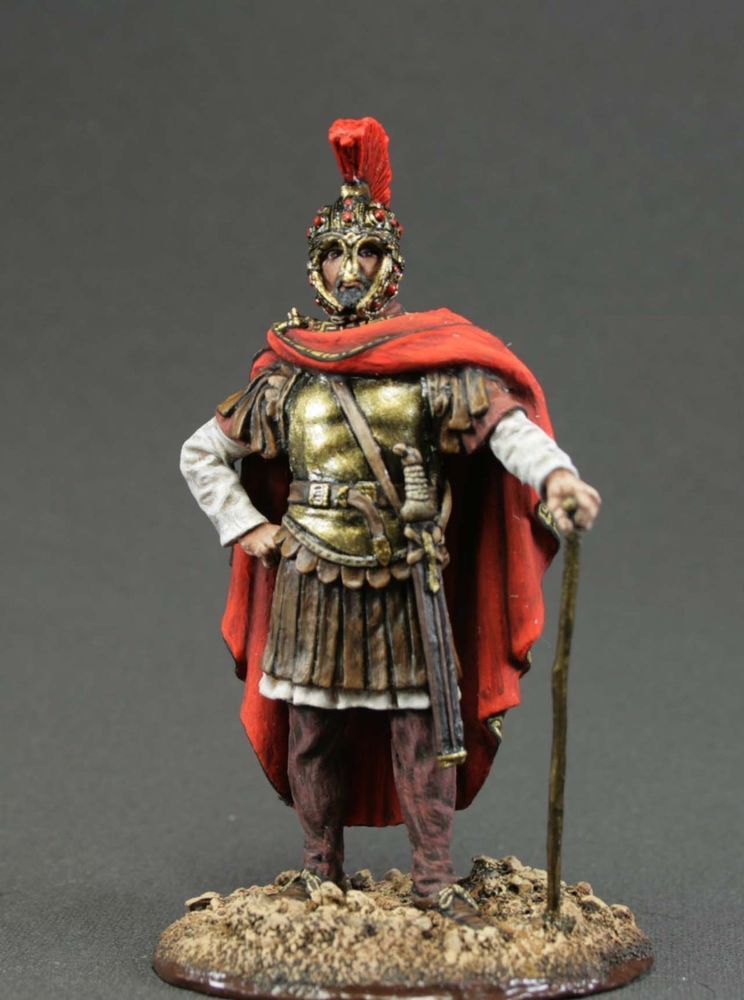
Now a year later in 388, many changes had happened both with the Goths and Romans and back in the Roman Empire’s eastern half under Valens, the Prefect of Constantinople Trajan- in this story’s case only- had died, thus he was succeeded as the Prefect of the east by no other than Flavius Anthemius- although in real history Anthemius only became the Prefect of Constantinople later on in 405- but here Anthemius who was quite young was already in charge of the eastern capital Constantinople itself. It also happened that this year 388 had already been 10 years since the Roman victory over the Goths at Adrianople, though many of the officers who fought at Adrianople and survived it had now become top generals in the empire whereas in the east Lupicinus who was already a general back then still remained as the cavalry general or Magister Equitum in Moesia while Stilicho in this story’s case became the Magister Equitum in Thrace, although two new generals in the east rose to prominence at this time which included the Aquitanian (Western Gaul) born Rufinus now serving as a commander in the imperial guard and the Roman-Spanish infantry general or Magister Peditum Timasius, in which the latter was a common soldier 10 years earlier that fought in the eastern army under Valens in Adrianople. In real history, both Timasius and Rufinus had also risen to prominence in 388 as well, but in this story too like in real history both Rufinus and Timasius would also come to distrust each other for really petty reasons as Rufinus was scheming and ambitious to the point of wanting to be emperor himself one day. In the west on the other hand, Bauto being already quite old had already died by this point thus he was succeeded in his position as Magister Peditum there by Arbogast like what happened in real history as well while Richomeres still remained as the west’s Magister Militum, and though in real history the western emperor Gratian had no children as he died in 383 before having any, here in this story’s case he would have his first child which was a daughter with his wife Laeta here in 388. In real history, the west’s general Count Theodosius the father of Theodosius had already been dead since 376, but here in this story we would put his death at 388 wherein he would die in retirement in Hispania from old age, though news of his death in this story would reach as far as to his son Theodosius living with the Goths across the Danube, and when hearing of this Theodosius would feel the need to return to the Roman Empire just to attend his father’s funeral, though it would be impossible as he had already been made a true enemy of Rome.
Theodosius would however tell Fritigern and Athanaric that he would have to return to the Roman Empire just to bury his father and pay respects and Athanaric here would agree to it by joining Theodosius in travelling to Constantinople as after all Athanaric came up with a plan to fake a peace negotiation with Valens as a way to allow the Goths to focus on consolidating their rule to the north. Athanaric joined by Theodosius and a number of Goth troops escorting them would then head to the Danube along Dacia and from there sail to Constantinople down the Danube and into the Black Sea, and before arriving, Athanaric had already sent word to Valens saying that he would come to negotiate peace, thus when arriving, Athanaric together with Theodosius would be immediately escorted to the imperial palace by the Palatini troops. Theodosius meanwhile would wander around Constantinople’s streets as he true enough never saw the city his entire life despite serving in the eastern army, though he would not yet be recognized by anyone due to his complete appearance change now that he grew his hair long and grew a beard as well, although some especially those who served under him in the army before and had now retired after looking at him carefully would recognize his face and begin throwing rotten food and eggs at him yelling at him “traitor”, although not wanting to cause any trouble Theodosius would simply run away and hide in a church.
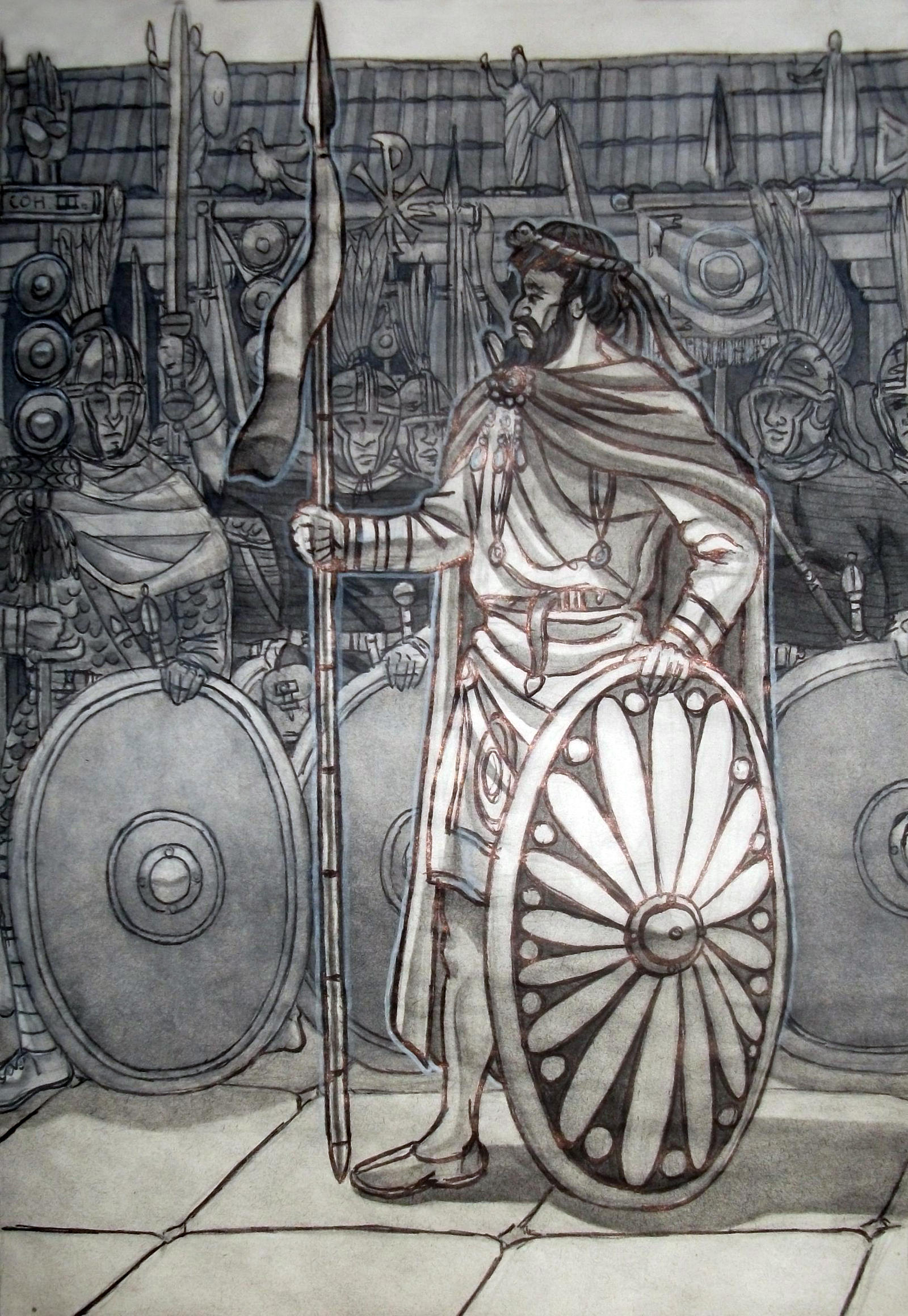
Back in Constantinople’s palace, Athanaric would personally meet Valens and when seeing Athanaric, Valens would clearly recognize him as 19 years ago back in 369, Valens concluded a truce with the Goths following Valens’ victory over a short Gothic invasion of the Roman Balkans at a boat in the middle of the Danube with no other than the same Athanaric. Back then from 367-369, a large army of Goths attacked the Roman Balkans as they originally supported Procopius, a general that tried to usurp power from Valens between 365 and 366, however the Goths that were supposed to support Procopius arrived too late as Procopius had already been executed by Valens’ troops thus forcing Valens to deal with the Goths. Back then, Valens had managed to push them back across the Danube leading to a peace treaty concluded with Athanaric, however Valens knew Athanaric and his Goths would not keep their word as true enough in 376 the Goths invaded the Roman Balkans again. Here in 388, Valens when seeing Athanaric again would without even greeting him first say to him the he surely broke his word believing Athanaric sent Fritigern and his Goths to invade the empire back in 376 but Athanaric here would tell Valens that he had nothing to do with that invasion in 376 and it was all Fritigern’s idea as he did in fact wanted to migrate to Roman territory to escape Athanaric, though Valens here would ask what ever happened to Fritigern, and Athanaric would say that Fritigern had died although lying about it thus making Valens here fall for Athanaric’s peace proposal. With the Goths and Eastern Romans making a sort of “peace” again, the funeral of Theodosius the Elder whose body was brought to Constantinople all the way from Hispania would happen at another church in the city as the Church of the Holy Apostles was only reserved for emperors and members of the imperial family whereas Theodosius and his family were not part of any imperial family, while Valens, Athanaric, and Theodosius the Younger would be present for the funeral. At the funeral, Theodosius would so happen to run into Valens and here Valens when seeing his old subordinate general who he met in person only a few times before- including after the Battle of Adrianople in 378 in this case- turned traitor Theodosius now looking completely like a Goth would offer him another chance to return to serving Rome as a general while also reminding Theodosius as well on what he did to Alatheus which was by leading to the latter committing suicide but Theodosius whose mind has now been corrupted by both Athanaric and Fritigern would decline Valens’ offer saying that he has now gained all the power and glory he so wanted now being already as something like a co-ruler of the Goths. Valens would lastly remind Theodosius that based on what Valens knows about Athanaric, there would come one day that Athanaric would betray Theodosius and possibly kill him when Athanaric and the Goths would get what they want from Theodosius, thus Valens would then confront Athanaric one more time telling Athanaric that if he just simply launches a small raid on the Danube border, Valens would immediately declare war on the Goths.

Following this, Valens’ wife Empress Albia Dominica who in this story would still be alive at this point would tell her husband that she had a vision wherein she saw that there was still some light in Theodosius wherein he would seem like that he would one day renounce his loyalty to the Goths. Valens now partially listening to his wife’s advice would then allow Theodosius and Athanaric to leave Constantinople unharmed simply as a way to further make Theodosius feel guilty for betraying his emperor. About a month later now that Athanaric and Theodosius had returned again to their base at Sarmizegetusa which now even upgraded to an actual trading and mining town like it was under the Romans, its Goth population would now be preparing for the upcoming event of Theodosius’ and Valdis’ wedding which would further secure Theodosius’ legitimacy as one of the Goths’ rulers as Valdis here was the last surviving ruler of the Greuthungi as she was their young ruler Vithericus’ regent, however at this point the young Vithericus who was already fully grown at 16 would no longer be needed.

The wedding ceremony would then be an Arian Christian one as Valdis as well as many other Goths were Arian despite Theodosius still being a Nicene Christian, and for the wedding the now 41-year-old Roman-Spaniard Theodosius would wear a complete Roman general’s uniform consisting of a new perfectly shaped general’s gold breastplate armor with purple and white tassels or Pteruges and a purple cloak over it as if he were an emperor while the beautiful blonde Valdis- who would be around 35 here- would look completely different from her usual battle attire of a simple fur band around her chest and fur cloak and skirt now in a long-sleeved white dress and a flower crown. Now Arian Christianity seemed to be the perfect religion for the Goths as in the Arian faith they were free to worship God outdoors similar to how the Goths when they were still Pagan worshiped their old gods, and not strictly only inside a church the way the Nicene Christians did, thus the wedding ceremony of Valdis and Theodosius would take place outdoors in a hill outside Sarmizegetusa with an Arian priest marrying them and in attendance would be everyone on the side of the Goths including Athanaric, Alaric, Magnus, and the teenage Vithericus together with his mother while Fritigern would be the one here to walk Valdis down. In the wedding feast following the celebration, Theodosius and Valdis would then plot to eliminate Vithericus by serving him endless glasses of wine to the point of getting extremely drunk and passing out, and when passed out they would drag him to his bed. That night with the celebrations all over, Valdis would then enter young Vithericus’ room giving him this time a wine glass but rather than wine it was poison inside it, thus the drunk Vithericus would drink from it, and in the next morning he would be found dead on his bed. With Vithericus dead, everyone would think he died after drinking too much when being underaged without knowing Theodosius and Valdis really plotted to poison him to get rid of him as he was no longer needed and he too would become a threat to their power one day, and when the newlyweds Theodosius and Valdis knew their plot was successful, they would laugh and kiss each other in private while naked on their bed except for a fur blanket over them. Not too long after, Athanaric would remind all his Goths including Theodosius, Valdis, Magnus, and Alaric that the time has come that they head north and consolidate their rule there, as now with the Thervingi and Greuthungi Goths united and now having a more superior style of fighting after adopting Roman battle strategies and using Roman style weapons, they could now have a better chance of standing against the invincible Huns.

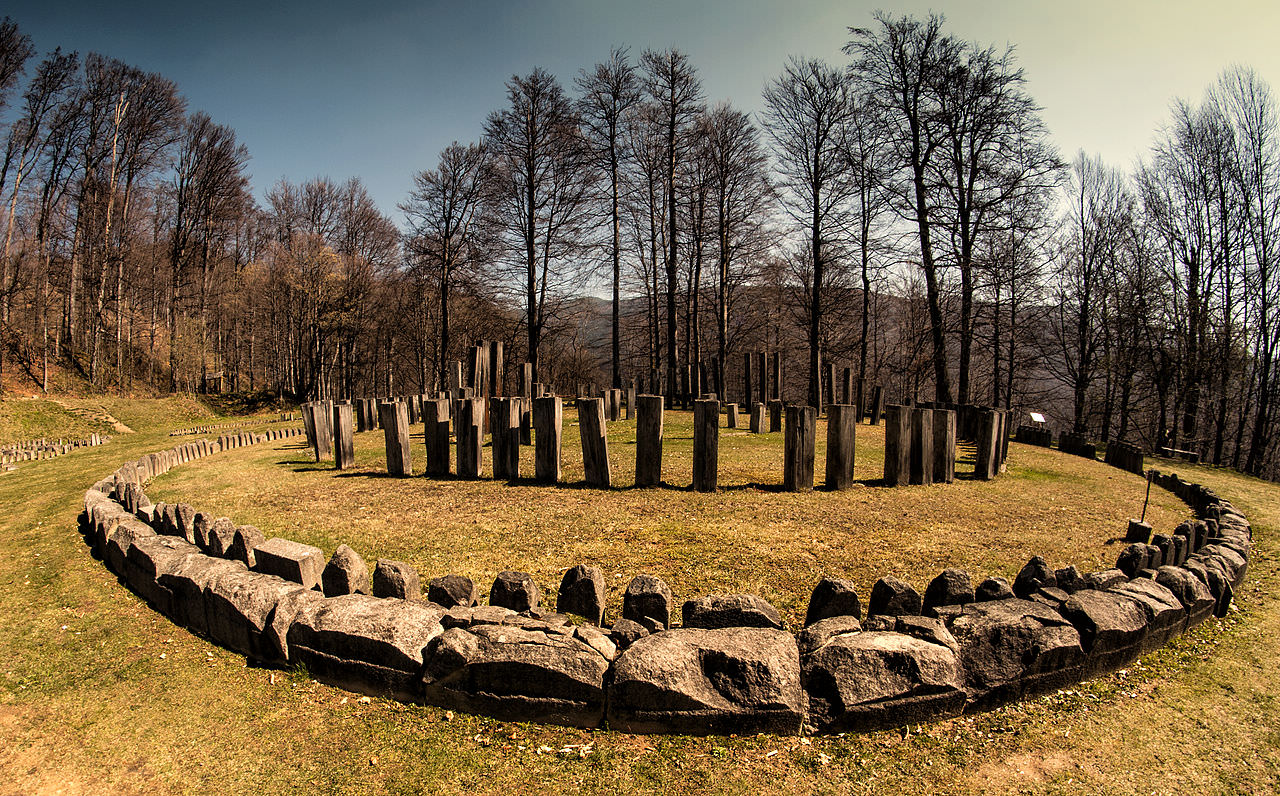
The spin-off’s Climax- The Gothic Empire and Showdown with Rome (389-395)

In the meantime, as both halves of the Roman Empire: the east under Valens and west under Gratian continue to be fully separate from each other with both rulers no longer in contact with each other and their armies as their own without sharing them with each other as it was intended to be, the Goths would now gain ground expanding though not south into the Roman Empire but north into their old homeland in what is today’s Romania, Moldova, Ukraine, Belarus, Poland, and Lithuania. As for the Goths’ co-rulers Athanaric and Fritigern despite having their differences especially in religion and styles of ruling, what they here had in common was the goal to expand north and reclaim their old homeland that had been devastated by several Hun invasions in the past years. However, in order for the Goths to maintain their lands and not be forced to migrate again due to the Huns, they had to adopt systems and practices from the Romans which Theodosius in the past 10 years when living with the Goths had taught them which are namely:
- Have defined borders, in this case natural ones such as rivers and mountains.
- Have an army permanently stationed at the borders to defend it just as the Romans do having the Limitanei as an entire army itself assigned to guarding the empire’s borders.
- Have a major source of income from trade and exports.
- Centralize the state administration by having a capital where its ruler resides.
- Pay the army regular wages and supply them with food.
Now the Goths had basically followed these 5 tips as for one both Fritigern and Athanric had concluded that their empire’s borders would be at rivers in which they would station their own troops to defend it, for their economy they have now come to rely on using the rivers to trade with other barbarian tribes selling them off the resources from their land including gold and iron, for their government they have now established themselves at the old Roman settlement of Sarmizegetusa in Dacia where their co-rulers Fritigern and Athanaric now reside, and lastly Theodosius using his Roman way of thinking set a rule that every Goth soldier would be equipped with standardized Roman style weapons and shields and would be supplied with food as well by the newly formed Gothic “government”. However, the one thing the Goths had not yet adopted here was having a standard currency the way the Romans here did by having the gold Solidus as it would take time to actually settle on having a currency, though having gold mines in Dacia would surely mean the Goths would mint their own coins soon.

Now in 389, the Goths now numbering up to 50,000 with Theodosius, Valdis, Alaric, and Magnus Maximus led by both Fritigern and Athanaric who despite both being already old with Fritigern already 67 and Athanaric already 58 but both still very agile and strong in fighting would march north from Sarmizegetusa crossing the Carpathian Mountains into what would be the mainland of Scythia also known as Oium which was the old homeland of the Greuthungi Goths in today’s Ukraine, and when arriving there they would meet little resistance and luckily at this point the Huns were not around for the meantime as they retreated back to their mysterious homeland in the eastern steppes, but instead they would only find the same old scattered Sarmatian and Alan tribes, although the land had been severely burned due to the Hun invasions over the years. When arriving here at the old Greuthungi homeland, Valdis would feel a sense of nostalgia as she grew up there and had not fully said goodbye to it as she and her people which included Alatheus and Saphrax were forced to flee it when the Huns arrived, and here in this place Valdis would tell her husband Theodosius all about her time growing up there while Alaric in his usual rage especially in battle would simply lead his Goths charging at the Alans and Sarmatians easily decimating them.
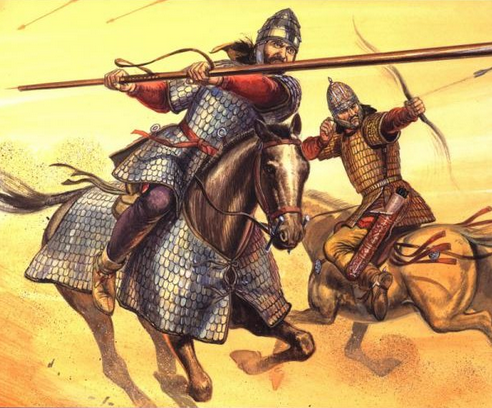
The defeated Alan and Sarmatian tribes would thus submit to the Goths and would in fact even agree to join forces with them in battle against the Huns and later against the Roman Empire itself. With the old Greuthungi homeland all the way down to the northern shores of the Black Sea secured and now put back under the Goths, Athanaric and Fritigern would thus lead their men now with their newly gained Alan and Sarmatian allies which even included Sarmatian women warriors east to what would be the Dnieper River in today’s Ukraine that flows out to the Black Sea, and when at the Dnieper both Fritigern and Athanaric would conclude that this exact river would be their empire’s eastern border thus both rulers would assign a number of their soldiers to permanently guard it in order to preempt the Huns if ever they showed up again east across the river. At this point however, tensions would already rise between Fritigern and Athanaric especially over their new empire’s borders as Athanaric was clearly more ambitious wanting to expand further east to unknown territory while Fritigern was happy with what they would soon gain. While at the Dnieper, both Fritigern and Athanaric would announce that they both would return to Sarmizegetusa as the capital needed to be defended in case the Romans would invade it by any chance considering that the Goth leaders have left leaving only a small garrison to defend it while both rulers too were quite old for an intense journey across the cold and wild lands of Eastern Europe, but little did Theodosius and Valdis know that tensions were already rising between Fritigern and Athanaric. Theodosius would now be the one completely in charge of the Goths’ expedition up north while Valdis, Alaric, and Magnus would join them as they headed north sailing up the Dnieper River in small boats. For weeks, the Goths would sail up the river across the Scythian heartland to the point of encountering a new race people mostly with blonde hair and mostly dressed in white which were mostly farmers and hunters settling in small villages in the woodlands of this area, and these were the Venedi or the predecessors of the Slavs (originally from today’s Ukraine and Belarus).

Theodosius and Magnus being Romans were unfamiliar with these new lands they found and these Slavic people that lived there but Valdis being a Goth had known of them telling Theodosius that they are fierce warriors but choose to just search for land to farm and settle to grow their families, and though Theodosius was thinking of annihilating this people seeing them as a threat, Valdis would advise him not too as they could be useful slaves and infantry soldiers whereas they specialized in fighting with axes. Now the Romans would not encounter the Slavs until the late 6th century when the Romans as the Byzantine Empire faced multiple waves of migrations of Slavic tribes from the north across the Danube into the Balkans, but in this story’s case only set in the late 4th century, Theodosius and Magnus would be most likely the first Romans to encounter the Slavs in large numbers 2 centuries before the Romans actually did.

As the Goths sailed further up the Dnieper, they would encounter more Slavs and capture them as slaves turning the males into their slave infantry troops and women and children as prisoners having some of their weaker infantry Goths escort them back to Sarmizegetusa, while Theodosius being in charge of the expedition would also agree that the Dnieper would be set as their eastern border, thus he would continue to establish a Goth garrison there similar again to the Roman Limitanei force. The Goths would then continue all the way up to the source of the Dnieper which would be all the way north in the lakes of what is the Valdai Hills in today’s Russia where for the Romans Theodosius and Magnus, this new land they came across would seem so alien as no Roman has ever set foot this far north while the vegetation of thick dense forests, lakes, and rolling hills was something Theodosius and Magnus found totally alien too and so was its much colder climate as not even the woods in Germany or the highlands of Britain that they set foot in before were as cold and dense as this. This area they have come across too at the Valdai Hills were uninhabited but Theodosius also decided not to settle in them as the land was so far away from everything and the climate too cold while there were wild animals such as bears and wolves everywhere that could easily overpower them. While here at the Valdai Hills, the Goths would then find the next river which happened to flow horizontally, and this here would be today’s Daugava River, and after chopping trees in this area and turning them into new boats, the Goths now with their Slav, Sarmatian, and Alan allies would then sail west across this river for about a week eventually coming out in the Baltic Sea in today’s Latvia. Theodosius being this expedition’s leader would then conclude as well that the Daugava River together with the Baltic Sea would be their new empire’s northern border. A number of Goths and Sarmatians would thus be assigned to guard the Daugava as if it would be attacked anyway by invaders from the north as it was never known to these Goths or Romans here if any people ever lived north of the Daugava except for a few scattered groups of not so hostile people known as Finns living across the Daugava in these frozen lands.

When arriving at the Baltic Sea, Theodosius would remember hearing of a sea up north as well as a cold but sparsely populated land that was rich in a resource that could be made into translucent jewellery known as amber (Glaesum) and a group of people that were known to manufacture it known as the Aestii (today’s Estonians) from Greek and Roman history books he read when growing up in his large estate in Hispania, however he knew that no Roman or Greek has ever set foot this far north before except only hearing of this place from barbarians they encountered while also acquiring the amber there by trading with these said barbarians.

Valdis however would tell Theodosius that this place up north here by the Baltic was nothing new to her people the Greuthungi Goths as back when she was a young child their ruler then which was her uncle Ermanaric, a brave warrior king despite being very old conquered lands all the way up to the Baltic, however his territory was stretched too far with limited troops defending it allowing the Huns to storm into Eastern Europe conquering the lands he once conquered which thus led to the over 80-year-old Ermanaric committing suicide in 375 while not too long after his successor and Valdis’ brother Vithimiris died in battle against the Huns in 376 leading to both Greuthungi and Thervingi Goths to decide to migrate to Roman territory. For Theodosius and Magnus on the other hand, being what they would think as the first Romans to set foot this far north would come to call this place along the Baltic shore as Hyperborea, the Ancient Greek term used for the somewhat mythical cold land far up north where no one has ever set foot in before, though Theodosius when seeing the amber from here would exactly remember it as he knew that back in the Roman Empire this kind of resource imported all the way from this distant land was crafted into expensive jewellery making Theodosius also remember his mother seeing the amber as when she was still alive years ago she collected and wore a lot of it- in this story’s case only- which somewhat happened to cause Theodosius despite all his newly gained fearlessness and ruthlessness to tear up a bit remembering his mother.

At this point now being the year 390 with Theodosius having been with the Goths for 12 years now became more barbarian than Roman in traits as having been living in the cold climate north of the Danube shaped him into the ideal barbarian ruthless killer-warrior but with the same intelligence and practicality of the Roman military man that he grew up to be while his marriage to Valdis helped him understand the Goth and the general Germanic barbarian mind even more that he would come to forget his Roman heritage. After settling along the Baltic for months and gathering as much amber they needed over the months from the rather peaceful Aestii tribes living there, they would load them to their boats docked along the Baltic coast, and from here Theodosius with his Goths and allied troops- except for the Aestii who chose to remain peaceful with the Goths and not join them in battle- then sailed along the rugged Baltic shoreline with scenic cliffs and islands down to another river which would be the Vistula River in today’s Poland, and it was where the Vistula River met the Baltic Sea where the Goths were said to have originated in.

When sailing down the Vistula into what is the heartland of Poland, here they would encounter a horde of Huns that have broken in earlier on and made their way west across the Dnieper, and when encountering the Huns, Alaric again with his Goths would charge at them with such fury, however the Huns who were known to be swift horsemen able to obliterate anything in their path killed a large number of Alaric’s Goths with their speed and arrows fired as they rode in their horses with such full speed. With most of Alaric’s men destroyed by the Huns, Theodosius together with his fellow Roman and friend Magnus and Valdis would lead their own Goths against the Huns and by using the disciplined battle tactics of the Romans such as fighting in formation, they would manage to defeat these Huns and at the end take in the survivors as their allies making the Goths now conclude that the Huns were not as deadly as they thought as just with a bit more discipline in battle, the Huns could in fact be beaten. Now having defeated this band of Huns, the Goths and their allies including the newly gained Huns would travel south again down the Vistula arriving back at the Carpathian Mountains in Dacia and later once again to familiar territory at the Tisza River (in today’s Hungary) which Theodosius would also decide to mark it as their other western border, and finally after 2 years away, here in 391 they would arrive back in Sarmizegetusa with their newly gained Hun, Alan, Sarmatian, and Slav allies now forming what would be a coalition against Rome. When arriving back, both Fritigern and Athanaric would congratulate Theodosius personally for managing to define their new Gothic Empire’s borders, stationing troops to further protect them, and managing to gain new allies of different races for their future attack on Rome. At this point the new Gothic Empire of Fritigern and Athanaric would consist of all lands north to south from the Baltic Sea and Daugava River to the Danube River and Black Sea and west to east from the Vistula and Tisza Rivers to the Dnieper River with all people within it whether Huns, Slavs, Sarmatians, Alans, Aestii, and other Germanic people as Goth subjects, and now with the Dnieper River in the east fully guarded with fortresses now built, future Hun invasions from the east of it could now be checked. For the next years following 391, the new Gothic Empire and its borders would continue to stabilize as the Gothic troops now learned to fight like Romans and while the Goths thanks to Theodosius and Magnus had now adopted Roman governing systems while at the same time more Gothic troops would be sent to guard all these said borders as well as to subdue the people within their borders still unconquered, the leaders of the Hun, Sarmatian, Alan, Aestii, and Slav tribes would come over to Sarmizegetusa submitting to the authority of Fritigern and Athanaric bowing down to them, although these leaders would as well keep their authority as long as they paid tribute to the Goths. Meanwhile, nothing new would happen within the Roman Empire except for a few Alemanni and Vandal raids into the Rhine border of the Western half, but in early 395 in this story the eastern emperor Valens would die in Constantinople at the age of 67 while his wife Empress Albia Dominica in this story’s case had already died 3 years earlier in 392 and after the death of their only child which was their son Valentinus Galates back in 370, they would not have any children anymore, thus without anyone to succeed Valens as emperor in the east, Gratian who here was still alive as the western emperor based in Milan now at age 36 would appoint his now 24-year-old half-brother and co-emperor Valentinian II who would still have not much experience in running an empire as the senior eastern emperor to fill in the power vacuum.

Here, Gratian’s advisor Ambrose immediately asked Gratian to make Valentinian II his eastern co-emperor as Ambrose true enough felt guilty for leading to Gratian cutting ties with the eastern half, thus here by putting Valentinian II on the eastern throne, Ambrose felt that their unity with the east could once again be restored, although Ambrose only thought of uniting the empire again as Valentinian II unlike Valens before him was a Nicene Christian and not Arian. Ironically, 395 in real history was the same year Theodosius I after ruling the entire Roman Empire alone had died, although in this story Theodosius now 48 here in 395 would still be alive and well and when hearing that Valens had died, he would come to think that the Eastern Roman throne was vacant, therefore giving him the opportunity to seize the throne with his Goth army and if he does, he would now unite the Eastern half of the Roman Empire with the new Gothic Empire, and following that he would have all it would take to invade the west. Hearing of Valens’ death filled Theodosius as well as the Goths with such joy seeing this as an opportunity to invade Roman territory and still thinking that the eastern and western halves were still no longer friendly with each other, they believed it was now the perfect time to invade Roman territory believing too that the eastern and western armies would not help each other, but little did they know that Valentinian II filled in the role as the eastern emperor succeeding Valens, however the Goths and even Theodosius- in this story’s case- never knew Valentinian I’s son and Gratian’s half-brother which was Valentinian II ever existed, and because they never even heard of Valentinian II, Fritigern and Athanaric then ordered that they should now invade the Roman Empire for the right time had come after 17 years of waiting since the Goths’ defeat in 378.





In the spring of 395, the Goths now numbering up to 200,000 including Hun, Alan, Sarmatian, and Slav allied forces departed Sarmizegetusa marching back into Roman territory, however Athanaric here decided to divide the invasion wherein he and Fritigern would march west across the Tisza River to invade the Romans from Pannonia while Theodosius, Valdis, Magnus, and Alaric were to march south to invade the Roman Balkans using the exact same route the Goths used when trying to migrate to Roman territory in 376.
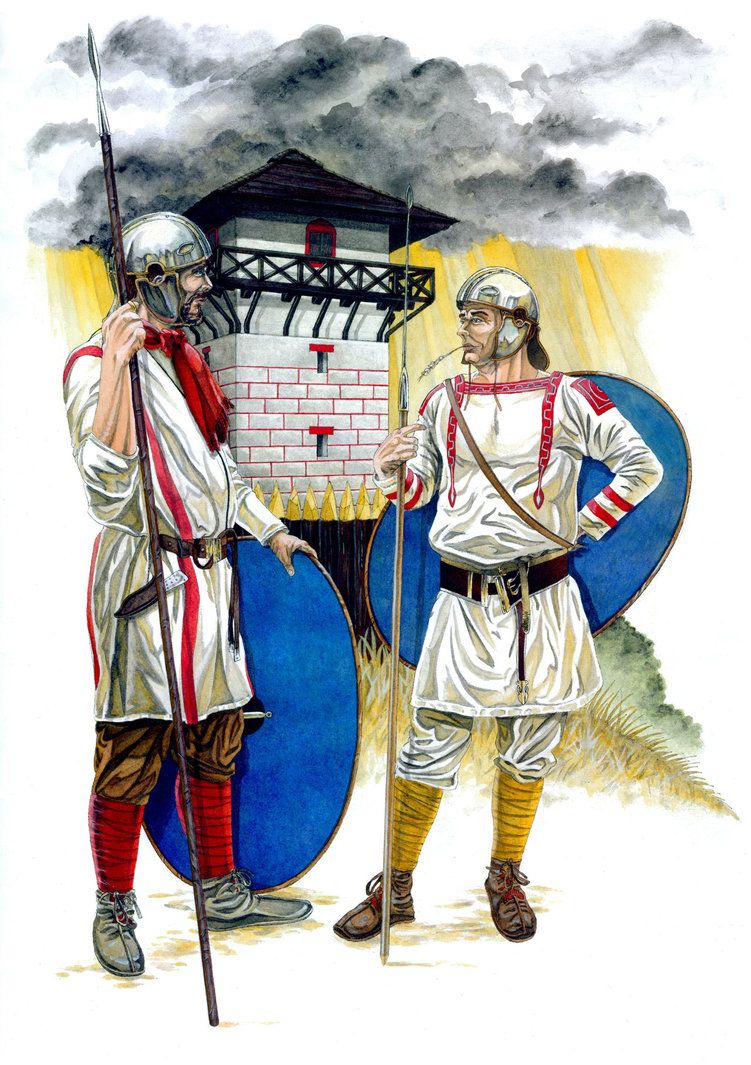
Theodosius leading his force of about 100,000 Goths and allies would then easily wipe out the Roman Limitanei along the Danube border in Moesia considering now that the Goths were able to beat the Romans by fighting the same way as they do while using the same weapons as well while the Huns and Sarmatians being more savage in battle brutally annihilated the Roman border troops and burned the river forts to the ground. When arriving in Roman Moesia, Theodosius once having been the general assigned there knew exactly the routes around and how to get to Thrace and eventually to Constantinople, thus here he would show his true Goth side and anger at Rome by ordering the massacre of thousands of Roman civilian citizens living in the area and it did not matter too if they were women or children. The one here however to carry out such atrocities on the civilians here would be no other than Alaric who conserving all his anger and hatred towards Rome for mistreating his people the Goths would full on ravage Moesia and later Thrace having everyone he saw that was not with them either stabbed to death, beheaded, torn to pieces, impaled, or burned and again these included men, women, children, the elderly, and even unborn babies while for those whose heads were decapitated, Alaric would then collect them as trophies carrying them with him as they proceeded south.
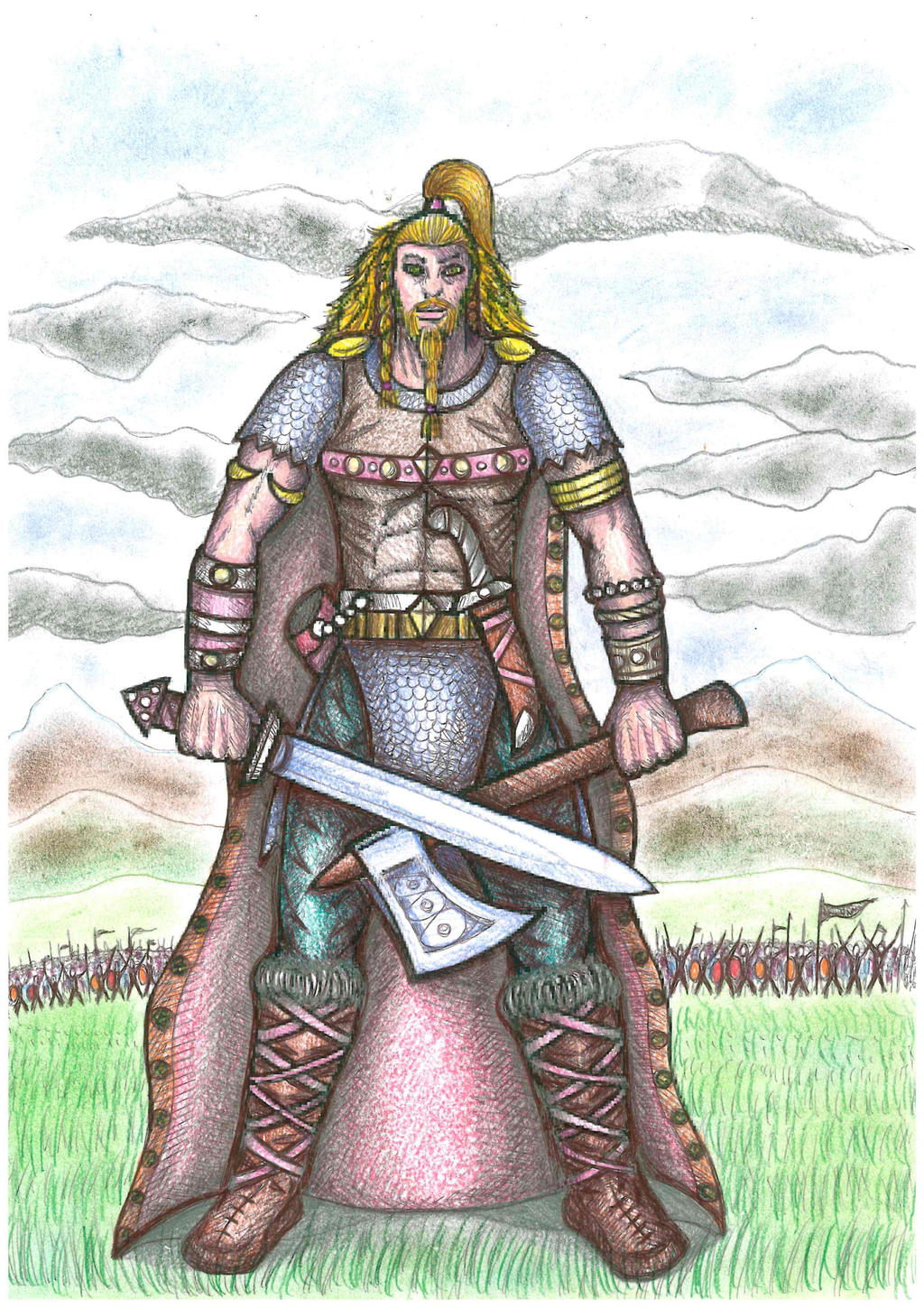
Just 2 weeks since the Goths crossed the Danube, both Moesia and Thrace had turned into a depopulated wasteland as 100,000 Goths and their allies have ravaged it while the Huns as said of them “uprooted everything in their path”, though when arriving in Thrace Theodosius would order his men to camp there to wait if ever any Roman general would ask for a truce which Theodosius knew he would refuse anyway for he no longer trusted any Roman, except for of course Magnus who was with him here. Some 3 days after setting up camp in Thrace (today’s Bulgaria), he would be approached by an Eastern Roman delegation led by no other than the new Eastern emperor the 24-year-old Valentinian II himself and joining him would be his generals Timasius and Rufinus and mother Justina who despite being over 50 here still remained attractive- however in real history Justina had already died in 388, but here we would still keep her alive in 395.

Theodosius here at 48 looking completely different from how he looked like before now with long hair, a full beard in the style of the Goths, and his body almost entirely made of muscle would be shocked seeing Valentinian II who he never had even heard of before, and being young Valentinian II would not properly negotiate with Theodosius whereas Theodosius putting his Roman heritage all aside would just plainly ignore everything Valentinian II was trying to offer whether paying tribute money or allowing Goths to settle more in the empire as Theodosius now with his anger against Rome all conserved for years only had one objective in mind which was to kill Romans. Valentinian II would then leave Theodosius’ tent upset but the one to have the guts to face him without any fight would be Justina here reminding Theodosius that he is still a Roman overall, that his father Count Theodosius would really be disappointed in him, and that really there is still some light in Theodosius, and although Justina saw there was still hope that Theodosius would still come back to the light of Rome, Theodosius yelled at her asking her to leave or be executed but before Justina left, Valdis who was in her quarters in the same tent behind the curtain came out right in time to meet the empress Justina. Here Justina would be further disappointed that the once proud and loyal Roman Theodosius married one of the cruelest Goths that pained their empire all these years ago but when looking at Valdis despite her looking all tough in full body-hugging golden scale armor with a large tight leather belt over her waist this time, Justina would sense that even in Valdis there was some conflict for some reason as plainly Valdis and Theodosius were just ordered by their rulers Fritigern and Athanaric to just simply invade and kill everyone that stood at their path. Before Justina would leave the tent, she would tell Valdis directly that Valdis herself despite being a savage Goth could still redeem herself by submitting to Rome and be made a Roman citizen of patrician status herself considering that she was married to the once patrician Theodosius and came from the Greuthungi Goth ruling class, however Valdis would also simply ignore Justina.
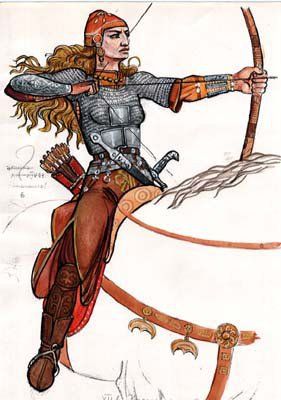
Now in the following day, Theodosius together with Alaric and about 20,000 of their Goths, Hun allies, and Sarmatian women warriors would leave their camp in Thrace to meet a Roman force in battle hearing that one was heading their way thus leaving Valdis and Magnus to watch over the camp while Valentinian II on the other hand when retreating to a nearby still Roman held town had already written to his half-brother and Western co-emperor Gratian to come to his aid with all the army he has now showing that the east and west have again reconciled with each other. As for Theodosius and his army, he would this time meet the Romans face-to-face in battle in one of the Thracian hills and leading this Roman army here of mostly highly trained Comitatenses legionnaires would be the same old general of Thrace the Greek Lupicinus, who in this story was a veteran of the Gothic War and had come a long way from being the incompetent and cowardly general that tried to settle peace with Fritigern’s Goths by feeding the Goths with dog meat in exchange for the Goths selling off their children as salves only for Lupicinus to suffer a humiliating defeat to Fritigern in 376 getting his arm broken in the process, to now becoming a brave and cunning general with the position of Magister Militum.

Here, before going to battle the Roman troops, Lupicinus would gather up in prayer as was the custom for the Christian Romans before battle, and following that he would order his soldiers to march in formation with their large round shields, however they would still stand no chance against the Goths now that they have fought in the same way as the Romans with such discipline allowing the Goths to break into Lupicinus’ troops while the Huns on their horses would savagely cut down the Romans one after the other, and Theodosius here with so much strength too would kill all Roman soldiers on his path with such ease as if they were like ants. At the end, the Goths and Huns as well as a very furious Alaric would totally obliterate this Roman army of 2,000 considering that the Goths and Huns too had more, however here they would only leave 5 Romans alive as well as their general Lupicinus, though not wanting to surrender Lupicinus would personally challenge Theodosius who he once served under before 376 to a duel, but despite Lupicinus being taller than Theodosius he would still lose, as Theodosius here would sweep Lupicinus’ legs with his leg, and with Lupicinus down, Theodosius without having said anything in the entire battle would behead his old fellow subordinate commander Lupicinus with one blow of his sword. With Theodosius and Alaric victorious here, they would return to their camp not knowing that Valentinian II had already asked for Gratian to lead almost his entire army west to assist them.
Now on the other hand, Fritigern and Athanaric with their army also consisting of 100,000 with Huns and Slavs would then head west across the Tisza River sailing through it south arriving once again in the fortress of Singidunum which was now abandoned and half destroyed ever since the attack on the Goth traitor Alatheus back in 387. At Singidunum, Fritigern and Athanaric with their army would then get off their boats and head west into Roman Pannonia where they would set up camp, however when arriving at Pannonia a Western Roman force which happened to be here at this time led by the same Western general Arbogast who was also a Gothic war veteran would face off the Goths here only for his much smaller army to also be annihilated by the Goths who would also surprise the Romans by fighting like them and using the same weapons.

Arbogast however would be spared but Athanaric after setting up camp in Pannonia would have his men brutally torture the Frankish-Roman general Arbogast for information on how to get into the heart of Italy which was Athanaric’s main objective here, however Fritigern would disagree with it as Italy was really out of the way as Fritigern here just really wanted to invade Roman Germania and Gaul which was more practical for the Goths as land to settle in. Athanaric though being drunk here would simply ignore Fritigern and would instead torture Arbogast himself to the point that Arbogast would admit he was never really loyal to his emperor Gratian and that he would even switch sides to the Goths if he were still allowed to keep his position, and true enough in real history Arbogast was never really loyal to Rome or the emperor but just to himself. Now Athanaric here would simply let Arbogast live the moment Arbogast revealed a way into Italy from Pannonia using the mountain passes in the Alps, though when getting the information Athanaric would knock Arbogast so hard to the point of almost killing him. Later that night, as Fritigern and Athanaric would stare at the stars sitting around the campfire drinking Goth mead, Fritigern would remind Athanaric that he was doing the opposite of what Fritigern wanted, however Athanaric would respond saying that he only wants to lead the Goths to a golden age ruling almost the entire Europe, but Fritigern in return would be angry telling Athanaric that he is disobeying Fritigern’s orders as Fritigern simply just wanted to conquer land for their Goths to settle in as well as to have revenge against Rome. Athanaric however would now happen to be so fed up with having to blindly follow Fritigern as if Fritigern owned him simply because Fritigern was the older one, thus Athanaric now would here remind Fritigern that Fritigern was simply nothing before and was only chosen to be their people’s king when these said people rebelled against Athanaric before 376 when deciding to migrate into the Roman Empire whereas Athanaric was really of the royal line of the Thervingi. Athanaric too would tell Fritigern that he was never really true to his word in allowing the Arian Christian Goths to practice their faith as Athanaric was really without question a devout Pagan Goth who seeing that if Fritigern had his way, his ways would destroy Goth culture altogether, thus further angering Fritigern who opposed Athanaric’s objectives to persecute Christians. Athanaric too would remind Fritigern that his (Athanaric’s) father was once the king of the Thervingi Aoric that the Roman emperor Constantine the Great back in 332 captured when Athanaric was only a year old which thus gave Athanaric the common hatred with Fritigern against Rome whereas Athanaric afterwards was looking for every opportunity to destroy Rome as seen when taking sides with the usurper emperor Procopius in 365 only to later surrender to Valens, thus Athanaric would once again tell Fritigern that he ruined his life and aims when Fritigern rebelled against him and was proclaimed king by his loyalists who wanted to remain as Arian Christians, thus Athanaric at this moment would proclaim that their joint rulership over the Goths is at an end. An enraged Fritigern here would however try to attack Athanaric but before grabbing his knife, Athanaric already pulled out a knife from his sleeve using it to slit Fritigern’s throat, and a few minutes later the 73-year-old fearsome Fritigern with just one cut of a knife in his throat dropped dead whereas the 64-year-old younger Athanaric ordered his men in the camp to celebrate only to later hear the battle horns of Roman troops in the distance and looking west, they would see several Roman dragon banners and the Western Roman emperor Gratian himself with his most trusted top general Richomeres commanding thousands of men headed their way as back in Milan when Gratian got word from Valentinian II, his advisor Bishop Ambrose too advised him to come to his half-brother’s aid and more importantly to save the empire.

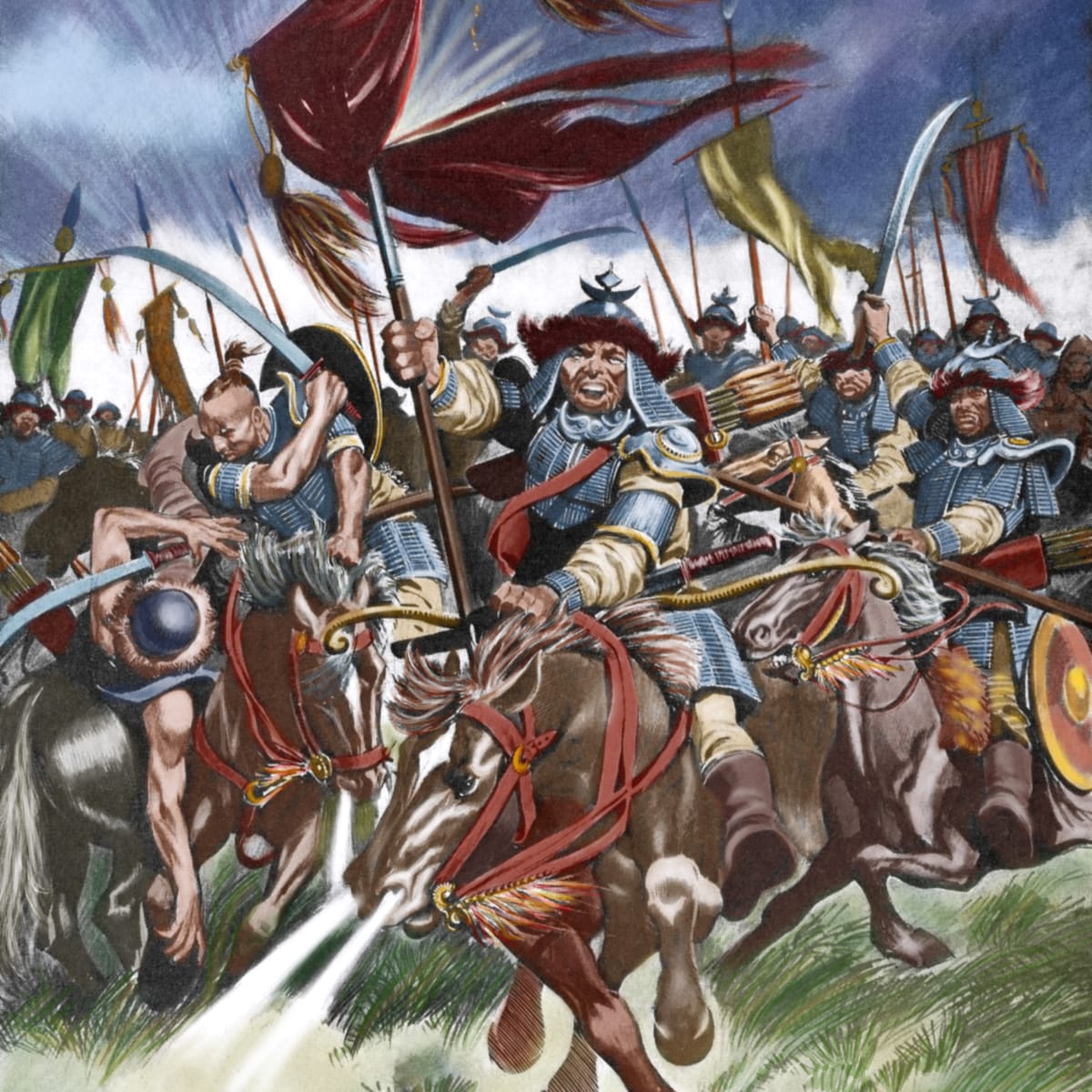
In the meantime, back in the Eastern Roman Empire, another Roman army this time led by the eastern generals Timasius and the half-Vandal half-Roman Stilicho too charged directly at Theodosius’ Goth camp but unsurprisingly Theodosius and his men were more than prepared for this Roman surprise attack. Theodosius then together with Valdis and Magnus would lead their men in an organized fashion like the Roman troops against the Romans while Alaric and his force of Goths would as usual mindlessly attack the legions of Stilicho and Timasius jumping over them and biting their flesh while Alaric himself would do the same that in fact Alaric in this battle would manage to take down the general Timasius with his bare hands and stab him with his sword in the heart while the Huns on the other hand would with such speed annihilate more Roman troops as if again, they were like ants but what the Huns here would use to overpower the Romans would be their lassos wherein they would manage to trap many Roman soldiers with it and eventually cut them to pieces when captured.

As Magnus Maximus would be engaged in this fierce battle despite being already in his 50s, he would still manage to slay many Romans with just his sword and Goth axes he would pick up from time to time throwing it directly at the heads of the Roman troops. Theodosius on the other hand would also be charging straight at the legionnaires in battle again slaying them like ants without even getting the slightest scars himself while Valdis in full armor too wielding a large two-handed broadsword would use her flexibility to kill as many Romans as she can whereas at certain points Theodosius would carry her by the waist allowing her to assault Roman soldiers by jumping over them and knocking them out to the ground by kicking them with her long and strong legs whereas beneath the soles of her boots were spikes which was also effective in taking down the Romans.

Both Valdis and Theodosius here would also manage to disarm many Roman legionnaires grabbing their round shields with the mark of Christ the chi-rho (Px) on it against them by smashing their skulls with it whereas they two together with the Goths would grab the darts found inside these shields throwing it back at the Romans while their Slav allies too would berserk charge at the Romans with their large axes. Eventually, Theodosius himself would confront Stilicho who was still standing thus leading to a duel between them wherein Theodosius would strike first cutting a part of Stilicho’s armor with his sword making Stilicho attempt to escape while Theodosius would taunt him saying “come on baby, show me what you got!”, however Stilicho here had another tactic in mind to plan a feigned retreat whereas he would later return with more reinforcements. Stilicho now seeing the Goths using Roman battle tactics decided it was time that he and his forces do the opposite by attacking these barbarians with more aggressive barbarian fighting styles considering that Stilicho being half-barbarian knew how to fight their way too.
Meanwhile back in Pannonia, the Western Roman troops also mostly consisting of the Comitatenses legionnaires and elite Palatini guardsmen led by Gratian and Richomeres would directly attack Athanaric and his camp, however Athanaric now also knowing the Roman way of fighting would manage to hold off well against so many Roman troops while his Goths and Huns would savagely attack the legionnaires as well with the additional use of flaming arrows causing many Romans to flee the site of battle.

Gratian and Richomeres with their Palatini troops however would still manage to hold off against the Goths and make their way into Athanaric’s camp leaving Athanaric slightly wounded himself, however Athanaric would still get up and kill as many Romans by himself while Richomeres would rush straight into one of the tents seeing no other than his nephew Arbogast in there badly tortured thus carrying him away to a haystack. With the Roman troops now surrounding Athanaric’s camp, Richomeres from inside would then send them a signal to open fire at the wooden camp with flaming arrows, however Athanaric would still not be distracted despite his camp being burned. Back in Thrace, Theodosius together with Valdis, Magnus, Alaric, and their remaining troops would then march south burning a number of villages along the way whereas Alaric himself would continue to slaughter Roman citizen civilians to the point that Theodosius himself would start disapproving of all this violence before they would march into one of the passes in the Haemus Mountains in search for Stilicho, though when marching straight into the pass, they would so happen to run into an ambush ordered by Stilicho who faked his retreat 2 days earlier.
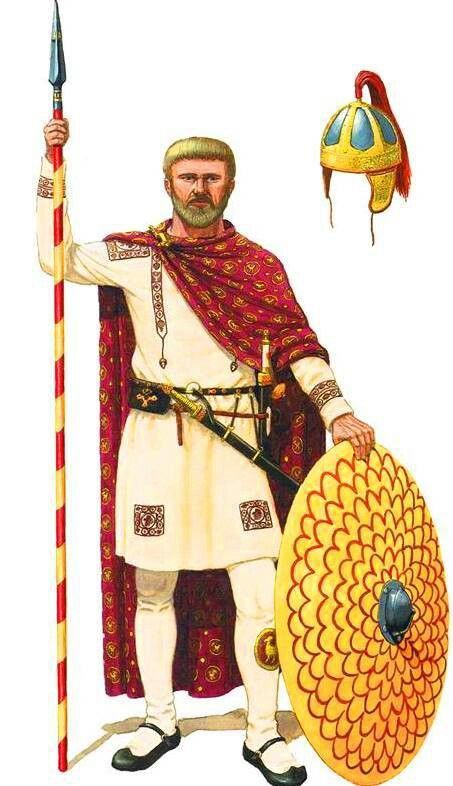
Here, Stilicho would like before back in Pannonia in 385 throw boulders down at the Goths while ordering his archers mostly being Armenian and Georgian mercenaries to fire at them from above knowing he has more of an advantage being on the high ground. Theodosius however would have his archers including Huns fire back at Stilicho’s men managing to kill a number of them with some falling off the ravine to their deaths, though when the arrows would no longer prove effective, Theodosius would instead have his Goths now wielding Roman spears throw them at Stilicho’s men above but Stilicho would still fight back by having his men throw spears down at the Goths, Huns, and Slavs. Seeing not much can be done, Theodosius here would simply ride his horse up the mountain through a narrow pass to deal with Stilicho leaving Alaric and Magnus to head across the mountain pass to the other side of the mountains while Valdis headed the other direction to attack another division of Stilicho’s men which mostly consisted of different barbarian warriors from different tribes as Foederati troops. Theodosius then would reach the top of the ravine where Stilicho and his remaining men were and here Theodosius would end up demonstrating how invincible he became by dodging all spears and arrows thrown at him as well as the large bolts fired by the ballistae. After managing to slay all of the remaining troops of Stilicho by himself like ants again, Theodosius would then confront Stilicho himself to another one-on-one duel, however this time both men would use not only their swords but the weapons of the slain soldiers in which both would throw at each other. Stilicho when grabbing a long Roman spear would then use it to hit Theodosius right at his armor damaging it causing Theodosius to use his sword to cut his armor off, thus now fighting Stilicho just wearing a tunic, though Theodosius too would manage to cut Stilicho’s armor open making Stilicho as well throw off his armor leaving both to battle each other using their swords when just wearing their tunics. As both would duel each other, they would soon reach the point where they would slash each other’s tunics causing both to fight with their clothes off. Theodosius though would soon enough gain the upper hand disarming Stilicho of his sword and knocking Stilicho to the ground; however, Theodosius would be distracted allowing Stilicho to reach for his sword with difficulty using it to slash Theodosius’ pants causing a few small amber stones to fall off, and when seeing it Theodosius too would be distracted as seeing the amber again reminded him of his late mother, thus Stilicho would kick Theodosius in the chest knocking him out.

Back in Athanaric’s camp again, though Gratian and Richomeres managed to rescue a wounded Abogast putting him at the back of Richomeres’ horse, the camp still burned to the ground whereas the slain Fritigern’s body too started to burn as a result of the flames spreading while Athanaric still did not care causing him to kill tens of Romans as well as their allied Alemanni and Frankish troops by himself. Eventually, Athanaric’s army would successfully rout the Roman forces and emerge victorious despite their camp burning to the ground, though Gratian, Richomeres, and Arbogast would manage to escape alive by riding off the other direction being east before Athanaric’s men won the battle and continued marching west. As Gratian and Richomeres with Arbogast would ride with such speed east across the Pannonian plains intending to seek refuge east believing it hadn’t yet fallen to the Goths as Gratian here believed it was best to just give up his western half and maybe one day come back to defeat Athanaric and his army with eastern troops, Athanaric and his men on the other hand continued west pillaging their way intending to march south to Italy through the Alps, although when Athanaric found a new place to stop and rest, there he thought of sending word to Theodosius, Alaric, Valdis, and Magnus to give up their attacks on the east and instead head west knowing that they would very soon enough conquer the whole western half of the empire. Back in the Haemus Mountains again with Theodosius being beaten by Stilicho in this hard-fought duel due to simply being distracted seeing the amber fall off his pockets, Stilicho would then grab his sword attempting to kill Theodosius only to be suddenly ambushed from behind by no other than Valdis herself who with a few Slav allies managed to kill the rest of Stilicho’s men, however by the time Valdis was already holding her dagger to Stilicho’s neck, Theodosius would suddenly here having a change of heart order Valdis to drop her weapon and let Stilicho leave. Valdis thus followed her husband’s orders leading to Stilicho leaving the site humiliated while Theodosius and Valdis on the other hand would be stuck above the mountain very confused on whether they won this battle or not.

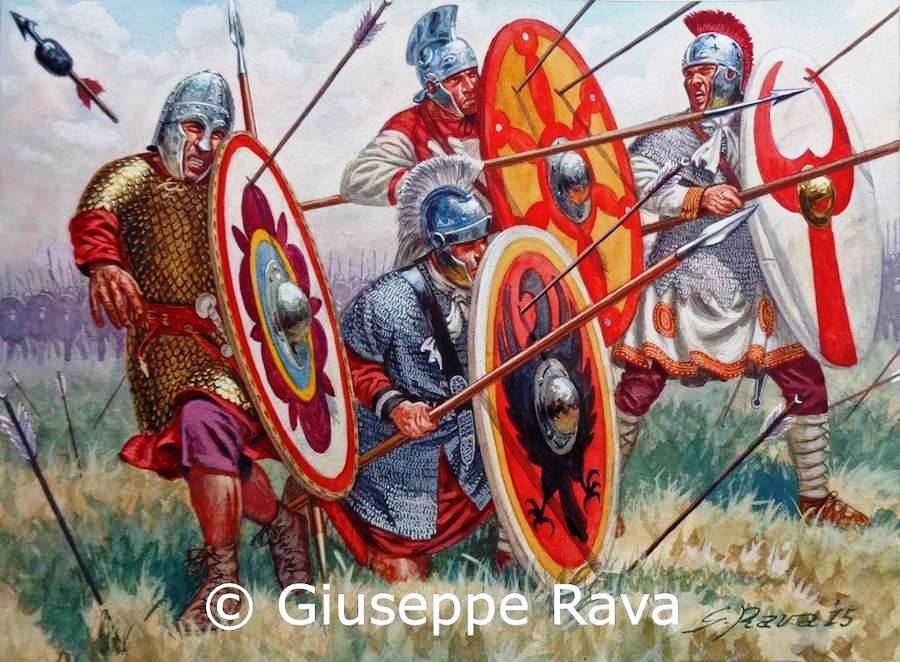

In the Haemus Mountains in Thrace as the defeated and humiliated Stilicho was allowed to leave the mountain freely, Theodosius and Valdis stayed above the mountain for a few hours to rest after the long battle whereas Magnus and Alaric made it to the other side of the pass with the remains of their Goth, Hun, Alan, Sarmatian, and Slav troops and there they would encounter a Goth messenger from Athanaric a few days later who here ordered that all their troops sent to the east should abandon their campaign and retreat west to the Western half of the empire as Athanaric had basically already conquered it for the Goths considering that the Western emperor Gratian had already fled east.

Alaric and Magnus would thus decide to ride all the way west across the Roman road there, the Via Egnatia to reach the Adriatic Sea in Illyria and from there sail across it to Italy whereas Magnus being a Roman and familiar with these lands would lead the Goth army down the road all while totally forgetting about Theodosius and Valdis and not even thinking of finding them and letting them join their advance to Italy. Along the Via Engnatia, Magnus and Alaric would then terrify and slaughter all remaining and now disorganized and frightened Roman troops before successfully reaching the Adriatic and sailing across it to Italy. By this time on the other hand, another Roman army this time commanded by the young eastern emperor Valentinian II himself together with his remaining generals Rufinus and Constantinople’s prefect Anthemius would already march out of Constantinople heading out to Thrace hearing of Theodosius’ attack there. As the army led by Valentinian II would arrive at the foot of the Haemus Mountains days later in Northern Thrace, they would destroy the last remains of Theodosius’ Goths, Slavs, Huns, and other allies due to them now being reduced in number, and there as well they would encounter the defeated Stilicho living in a tent like a homeless man whereas he would inform the emperor that he had spotted Theodosius in the mountains. In the meantime, Theodosius too had been wandering off in the Haemus Mountains for days where he began to start realizing all his faults especially in betraying Rome and joining the Goths only to bring such destruction to the empire he came from whereas Valdis would go her own way too in search for Magnus and Alaric wherein she too would begin to feel that they had just out of the blue betrayed her, and Theodosius thinking also that Athanaric and Fritigern at the end never really cared for them but just wanted to use them, however little did Theodosius and Valdis know that Athanaric had already killed off Fritigern.

Now the army led by Valentinian II and guided by Stilicho would thus reach one of the passes in the mountains wherein they would encounter Theodosius himself dressed down to old and worn-out clothes with his long hair and beard wandering aimlessly, however neither Anthemius nor Rufinus would recognize this strange looking man wandering around until Stilicho and Valentinian II who saw Theodosius looking like this weeks ago at the camp would tell them that this was exactly the traitor Theodosius. When now seeing Theodosius alone, Anthemius would shout out “you are under arrest for treason against Rome”, and though Theodosius would surrender he would reason with them but neither Anthemius, nor Stilicho, nor Rufinus would fall for him until Valentinian II himself would step up as originally, he intended to negotiate with Theodosius. However, this time Theodosius would act totally different from the last time he saw Valentinian II as here he would be completely remorseful and breaking down in tears apologizing for everything he has done against Rome just out of plain anger and hatred for feeling betrayed and ignored by Rome, thus he would say that he only joined the Goths thinking that he could gain power that way and show the Romans what he was capable of only to make him realize that leading the Goths only turned him into an evil monster which he was really not. Valentinian II here would have no idea on how to reason with Theodosius, although he would fall for it as again he as well his mother Justina originally intended to negotiate with Theodosius to bring him back while Theodosius would further elaborate his life and all the pain he felt ever since as here in this story’s case his mother died when he was only 10 and despite growing up wealthy in Hispania he was forced by his father to join him in military campaigns at such a young age whereas the young Theodosius was not even sure if he wanted that life while when becoming a general he was just ordered around and not given any credit by the emperors then being Valentinian I and Valens, thus he thought that by joining the Goths he would achieve more of a life than he had under Rome but at the end it turned out it too was not the life Theodosius wanted to lead while he also felt that he could not keep the Goths under control despite him leading them especially seen with Alaric who savagely killed everyone in his path which Theodosius despite being above him in command could not even stop. Now feeling horrible especially when it came to Alaric who he failed to stop from committing such atrocities which Theodosius did not want to see happen, this gave Theodosius every reason to consider returning his loyalty to Rome and renouncing his loyalty to the Goths while Valentinian II falling for Theodosius’ reasoning and guilt thus allowed Theodosius back considering giving him a second chance although he told him to join them to Thessaloniki which was somewhat the closest major city wherein they would decide what to do with Theodosius.
When Theodosius would arrive in Thessaloniki together with Valentinian II, Stilicho, Anthemius, and Rufinus, he would feel very troubled especially wondering whatever happened to his wife Valdis, and there they would already see Richomeres and the now recovered Arbogast who had already arrived there before they did as here the defeated Richomeres with his nephew Arbogast made their way from Pannonia south to the port of Pula (in Croatia) and from there sailed by ship to Thessaloniki when hearing Athanaric and his Goths have already marched into the Western half of the empire victorious. Richomeres would then tell Valentinian II that Athanaric and his Goths were victorious in the west defeating their army, while the shocked Valentinian II would ask what happened to his half-brother Emperor Gratian, but Richomeres would tell him that when they reached Pula, there Gratian decided to separate from them sending Richomeres and Arbogast to sail to either Thessaloniki or Constantinople while Gratian decided to go his own way and sail south across the Mediterranean, possibly to Egypt though Gratian never said where but rather he said that because of their defeat to Athanaric, he needed to get away from the public eye for the meantime and go somewhere very distant just to rethink everything while Richomeres chose to dock in Thessaloniki not Constantinople as it was nearer. Valentinian II here would be very concerned thinking that Gratian would possibly never come back by getting lost in Egypt and possibly dying there putting the Western half of the empire in chaos at such a bad time now that the Goths have invaded while Gratian too had no sons, however Richomeres would tell Valentinian II that there is simply no more western half as Athanaric could have already possibly taken over all of Italy as well as Pannonia and parts of Roman Germania. Now in Thessaloniki, the recovered Arbogast would in this case get drunk on one occasion to celebrate being fully recovered and when drunk he would reveal to Richomeres and Valentinian II that he revealed to Athanaric and his Goths the way to Italy from Pannonia as Arbogast never really had any loyalty to Rome but just wanted to be spared by Athanaric who captured and tortured him thinking too he could possibly have a life of more importance under Athanaric which however never came to be. Richomeres would thus be very disappointed with his nephew Arbogast and thus in the following day after Arbogast got drunk revealing what he really did, he would be tried in public in Thessaloniki, proven guilty, and executed by Valentinian II’s orders at the city’s Hippodrome. Theodosius meanwhile who would also be tried for treason together with Arbogast here would be proven innocent as well as being given a second chance and the position in the Roman army he so wanted which was Magister Militum or top commander of the infantry, cavalry, and navy by Valentinian II as Theodosius renounced all his loyalty to Athanaric and his Gothic Empire and said he had nothing to do with Alaric’s atrocities that in fact Theodosius even condemned it seeing it as just too much that even he would not do such things like that no matter how much he wanted revenge on Rome, and here as the Eastern Romans true enough desperately needed another powerful and experienced commander to retake the west from the Goths, Theodosius thus rejoined the ranks of the Roman army loyal once again to Rome. Meanwhile when returning to Constantinople, the young emperor Valentinian II would write a rather mysterious letter, but as it would turn out this letter was to the Sassanid Empire and its king Bahram IV as the Romans now could not stand against the now ultra-powerful Goths alone, thus it would mean taking extreme measures to once and for all defeat the Goths even if it would mean allying with the Sassanids, their longest mortal enemy.
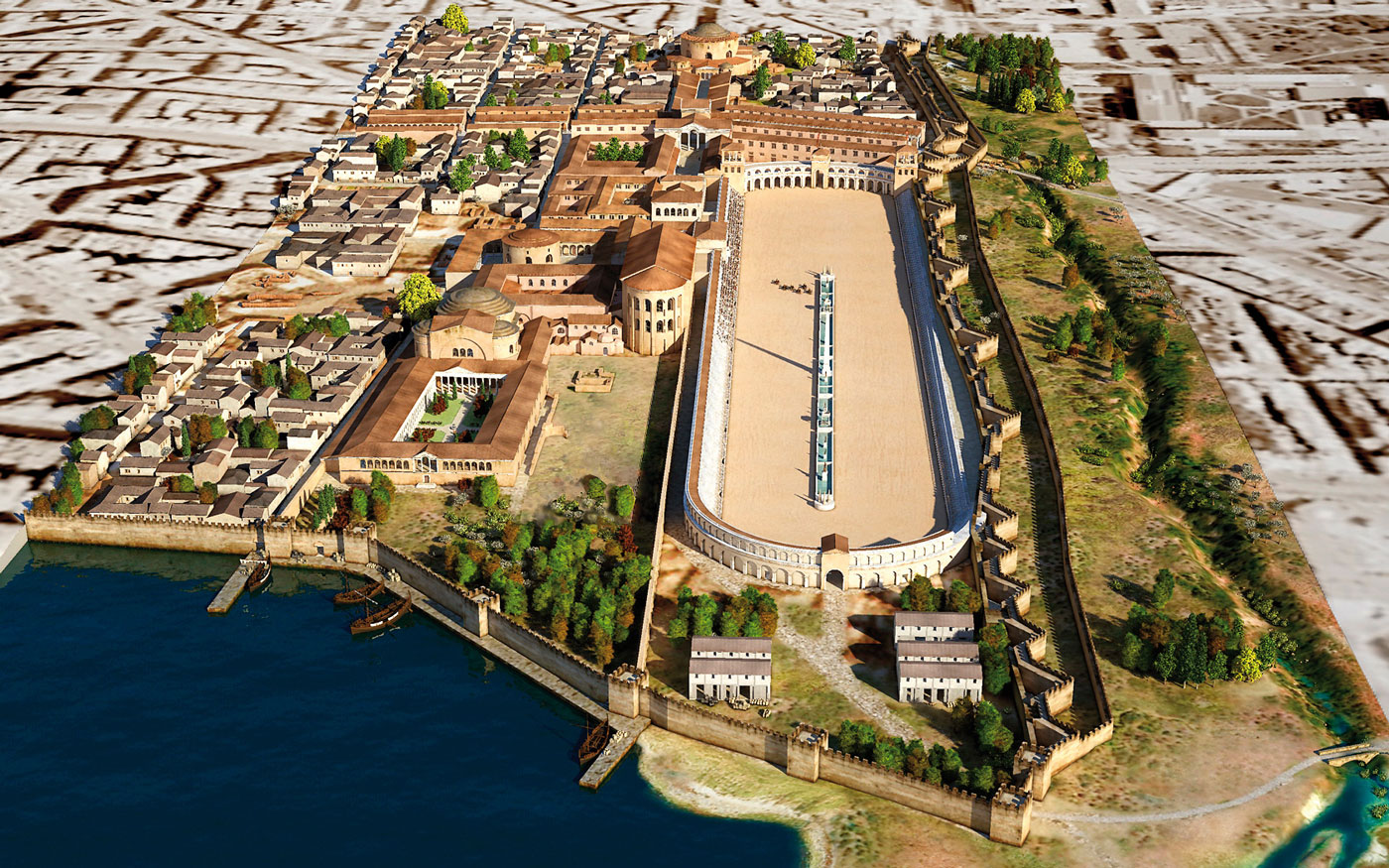
The Conclusion

At the end of this story in the year 395, the map of the Roman Empire and in fact of the whole Europe itself would totally alter. First of all, since Athanaric and his Goths succeeded in invading the Western half of the Roman Empire despite the Goths losing to the Romans in the Eastern half, only the Eastern half of the empire would still be left alive similar to how it would be in real history 81 years later in 476 when the whole Western Roman Empire fell leaving only the east with Constantinople as its capital alive. As for Athanaric’s empire, it would have a rather odd shape as his original Gothic Empire included almost all of Eastern Europe west to east from the Tisza and Vistula Rivers to the Dnieper River and north to south from the Daugava River and Baltic Sea to the Danube River and Black Sea, but with the addition now of almost all western provinces of the Roman Empire, there would only be a thin strip of land in what is today’s Serbia and Hungary that would connect the mainland of Athanaric’s empire to Italy and the Western provinces without yet even any access to the Adriatic Sea in the south. However, at the end of this story, Athanaric had not yet fully conquered all of Italy and the Western provinces, but if he does, he would as well conquer the Adriatic coast including the coast of Illyria and Istria (Croatia), while to the west he would end up conquering all of Italy, Roman Germania, Gaul, and Hispania leaving only Britain and Northwest Africa as the only lands in the west still left under Roman rule. With Athanaric now ruling all these lands covering more than half of Europe, he would be the world’s most powerful ruler, and as this powerful ruler he would be a very well-respected one especially by his Goth subjects but a very cruel one too especially towards his Roman subjects and most especially Christians as his goal was really to persecute Christians to keep the old Gothic religion and traditions alive. With Athanaric taking over the Western half of the Roman Empire, his army would thus continue to multiply with more Roman traitors joining him in which Magnus Maximus would be no exception, and so with Magnus and Alaric serving him, Athanaric would reign terror over his newly conquered Roman lands, but on the other hand his reign may not last long as most of his subjects within once Roman lands were strongly devout Christians whether Nicene or Arian and their devotion to their faith could be a factor of bringing Athanaric down, thus with both rival Christian sects now under attack by the fanatical Pagan Athanaric, they could possibly put aside their religious differences with Athanaric and his Goths as their common enemy or instead they would just let Christianity in the Roman Empire be so divided making them such an easy target for Athanaric to rule over. On the other hand, Valentinian II ruling the east at such a young age would already have to face a major crisis like no other emperor before him had especially since at any time the Goths could destroy the Eastern half too while at his age, he wouldn’t yet be able to handle an empire this troubled especially since he is the only emperor left standing considering that Gratian had disappeared in the meantime. What could happen next is that Valentinian II when seeking aid from the Sassanid Empire could ally with them not only to fight against the Goths and retake the Western half but to search for Gratian as he could have possibly ended up in Sassanid territory. As for Theodosius who now returned his loyalty to Rome, he would give valuable information about Athanaric and his Goths to Valentinian II while Valdis who happened to disappear in the Balkans would end up being found and arrested by Roman troops, brought to Thessaloniki, and tried, but Theodosius could possibly save her from being executed so long as Valdis too renounces her loyalty to the Goths and joins Roman society as Theodosius’ wife. Theodosius together with Valdis and possibly Stilicho who he would now reconcile with would all agree on a common objective to find Gratian as he is the only hope for saving the empire being the oldest emperor alive while possibly the last remains of Roman troops in Britain and Northwest Africa would mount a resistance against Athanaric and his Goths joined together with local Britons in Britain and local Berbers in North Africa, and in this case a Roman general possibly being Richomeres would travel to either places to train the resistance troops and later lead them against the Goths. With Theodosius, Valdis, and Stilicho travelling to Egypt or rather to the Middle East, they would possibly find Gratian there and maybe even gather an army of people from these said places to strike back against the Goths, while the Sassanids too would join at this point in the mission to retake the west, which would all thus lead into a major war like no other seen in those days.


And now this is all for the first spin-off sequel to the Byzantine Alternate History series being the spin-off for chapter I. Now in this case, chapter I of Byzantine Alternate History would no longer be a standalone story now that we have this story that follows it, and following this story too would be another one which would thus be the third and final part of the series expanding on chapter I. As this story covered in detail what would happen if we followed the course of events in chapter I wherein the Romans defeated the Goths in 378- rather than following the course of events in real history wherein the Romans actually lost to the Goths in 378 but eventually managed to end the conflict with the Goths years later- the follow up story to this one would then discuss what would happen now that the Goths took over most of the Western half of the Roman Empire leading to an eventual large-scale war like no other wherein the last of the Romans joined by the Sassanids and many other people strike back at the Goths once and for all. As this story featured so much action, blood and gore, emotional moments, betrayals, shifting loyalties, travelling to far off places deep into Eastern Europe never recorded much in Roman history together with more fictional twists than actual events that happened in real history that ended up seeming so impossible especially things concerning the Goths, the follow-up story to this will then just be like this one except with so much more action and adventure whereas despite it being set in actual years in the real history of the late 4th century, none of the same events that took place would actually happen. However, the next post following this would not yet be the follow-up to this exact one as chapters II, III, and XII will still get their own follow-ups, thus the 3rd installment for chapter I and the follow up to this one would come a few months later, however it would only be chapter I that would have its own 3-part series as the other 3 chapters that would have a follow-up would just have one follow-up. Anyway, this is all for the first of the Byzantine Alternate History spin-off stories, this is Powee Celdran the Byzantine Time Traveler… Thank you for your time!



